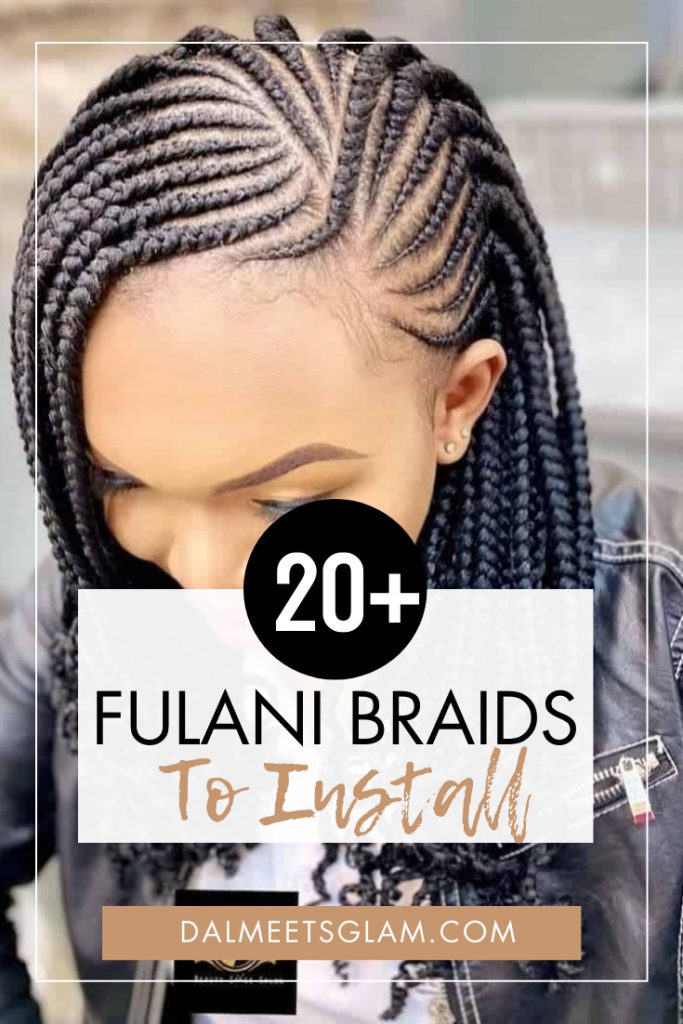Looking to try Fulani braids this season?
Well, tribal braids are among the most popular braided hairstyles and we love them for their versatility, and how well they protect the hair. Ideally, tribal braids have their roots in Africa and feature many different techniques and braid styles.
Anyway, among the most favorite tribal braids are the Fulani braids, which come from the Fula people of West Africa.
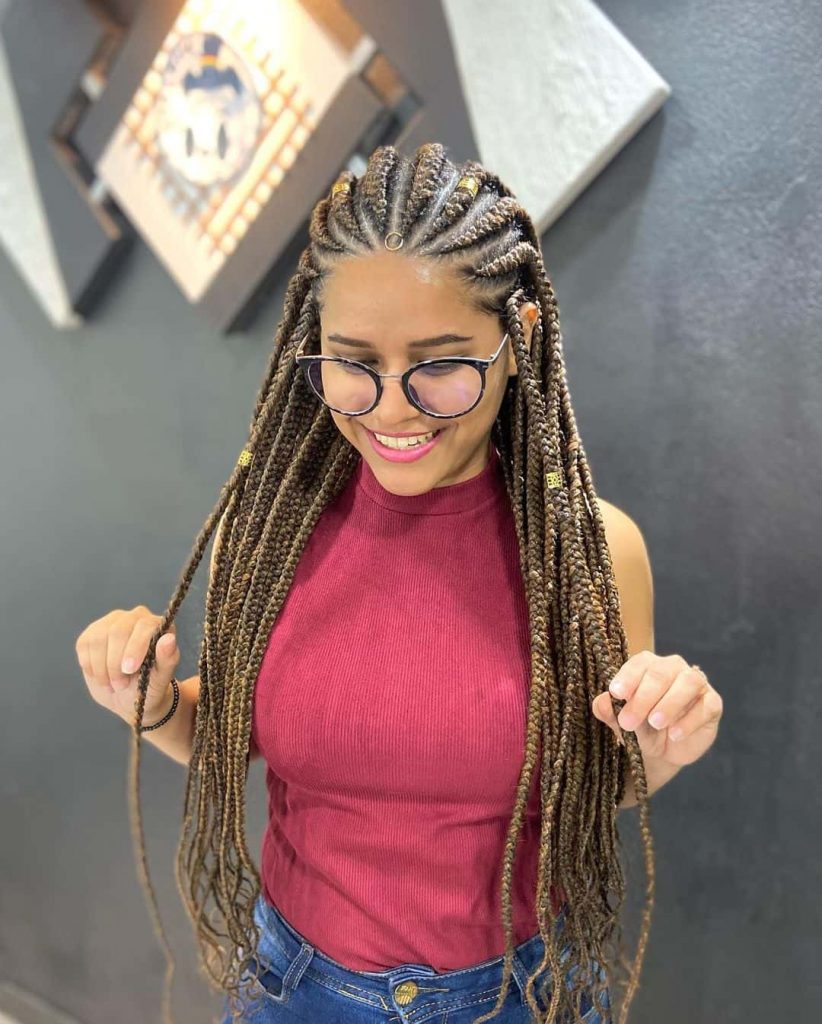
Traditionally, hair played a significant role in the culture of ancient African civilizations as it symbolized one’s family background, social status, spirituality, tribe, and marital status. As well, hair was a symbol of fertility.
The Fulani women would plait their hair into five long braids that they hang or loop on the side of their heads. They complete the hairstyle with a coiffure in the middle of the head and decorate their hair with beads and cowrie shells.
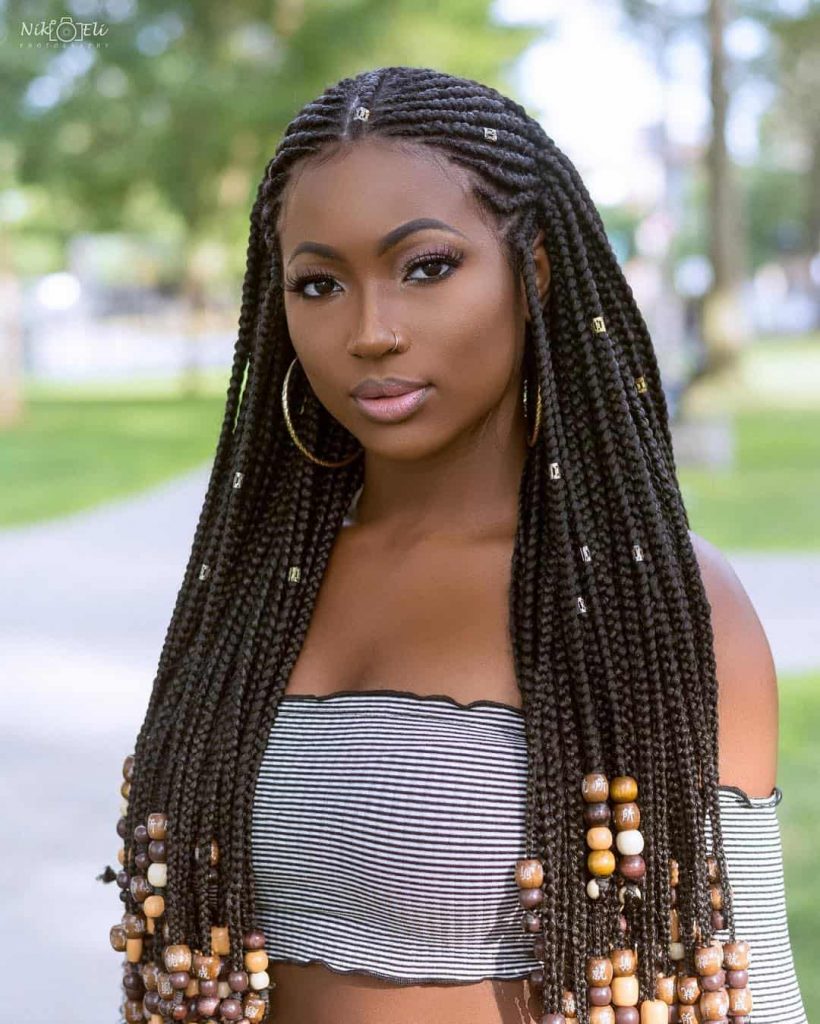
In modern culture, this signature Fulani braiding style features a central braid or twist at the crown of the head, which can be decorated with rings and beads, and thin to medium side braids that can be left loose or plaited into an updo.
What are Fulani Braids?
Fulani braids are a type of tribal braids that incorporates cornrows braided down to the center of the head, braids fall at the back of your head and additional braids are braided in the opposite direction from the back toward your face just near the temples.
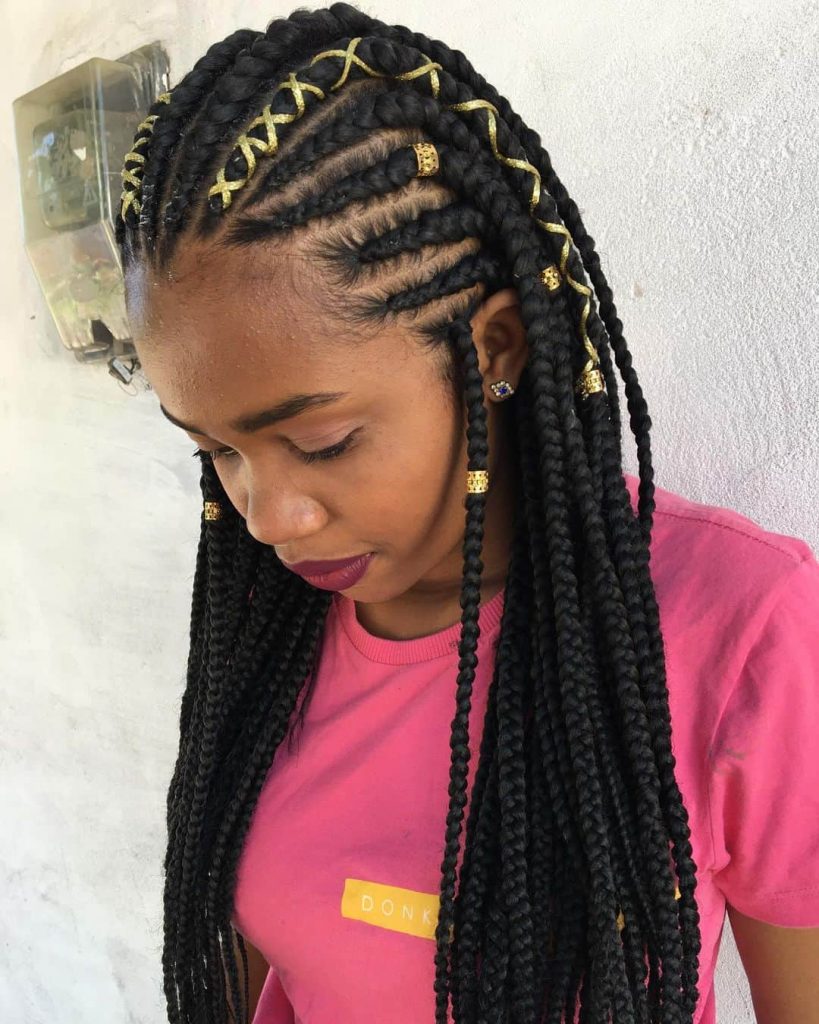
While the traditional Fulani braiding style incorporated cornrows on either side of the head is braided from back to front, you can always customize the look to have these braids or not.
Actually, many women are shying away from braids running from the back to the front as they tend to not last long in comparison to the rest of the braids on the head. In some cases, these hairs break off when not well maintained.
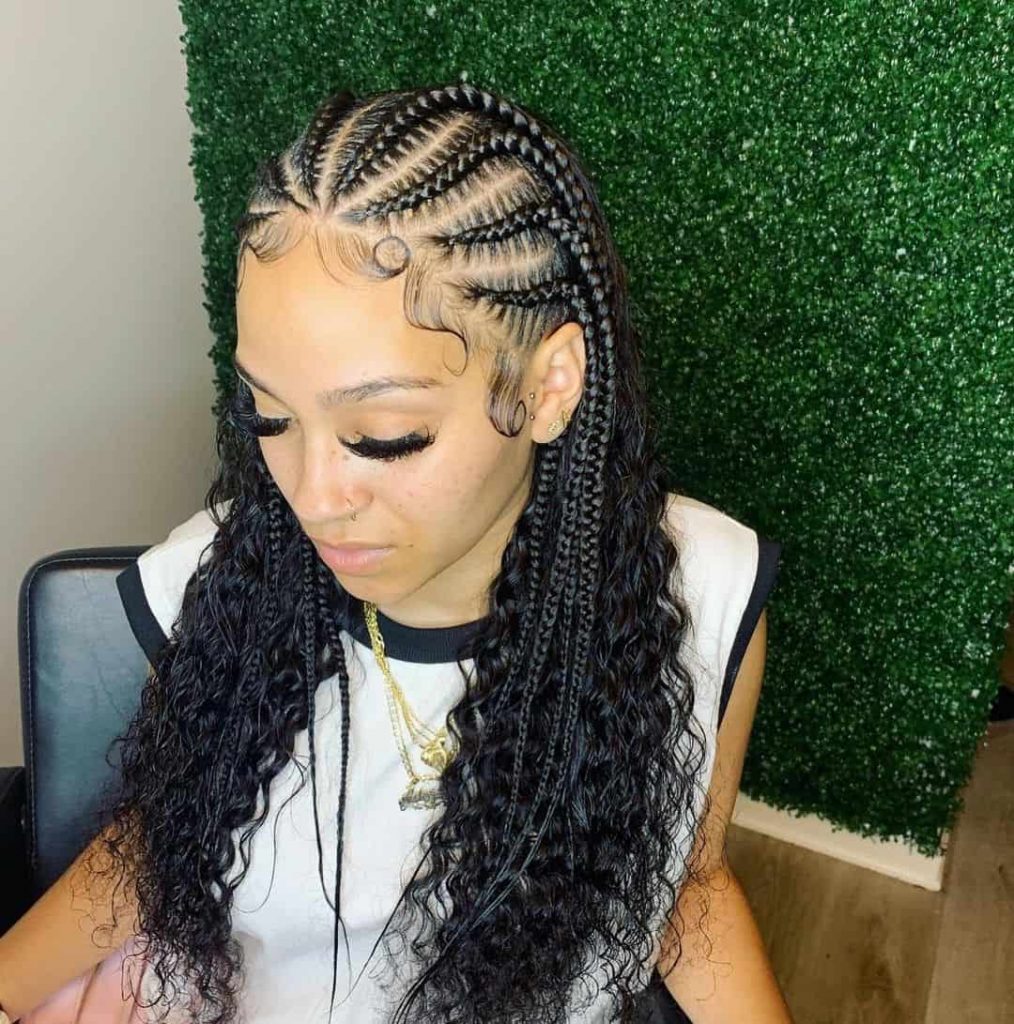
Other hairstyles will also do away with having braids falling back at the back of your head, and instead, crochet the back of your hair with your preferred crotchet hair. Use the Freetress Synthetic Crochet Hair as well as a crochet hook.
Here’s a tutorial on how to achieve such a beautiful crocheted Fulani braided look.
Other women also prefer weaving the back of their heads to achieve their preferred look. At the ned of the day, you want to customize the style to suit your preferences.
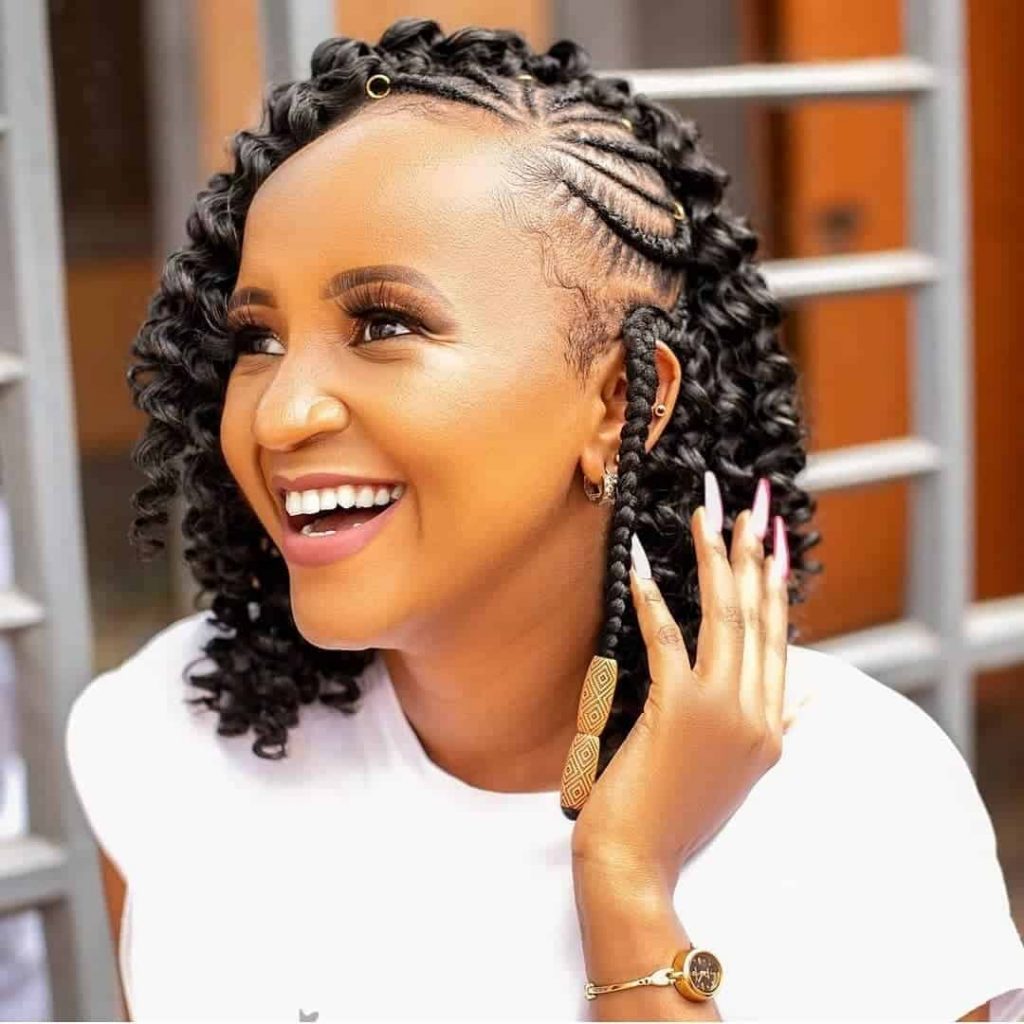
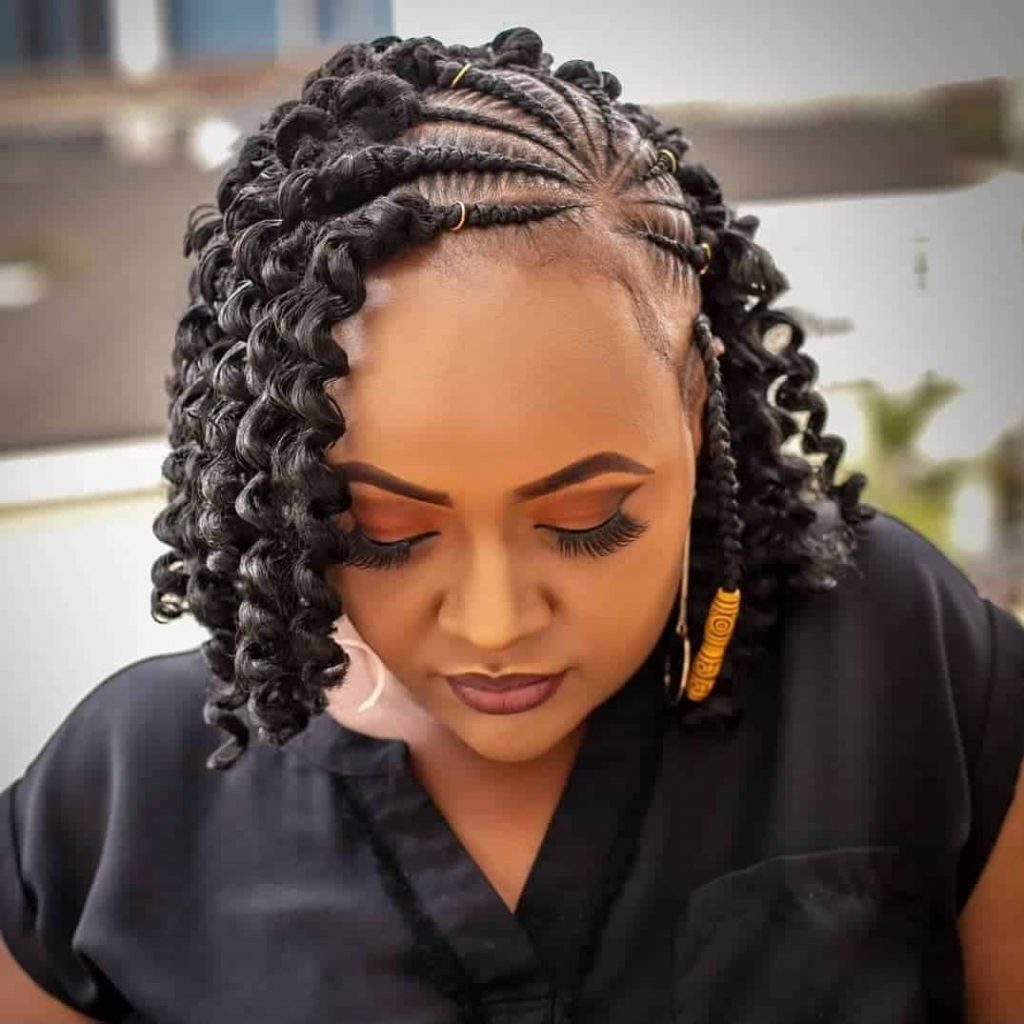
What you Need to Do Fulani Braids
While you can always get your Fulani braids done at the salon, you can also create the look yourself if you have the skill and time, and are looking to save on costs.
We recommend Fulani goddess braids if you’re plaiting your own hair since they are easier to install and take less time.
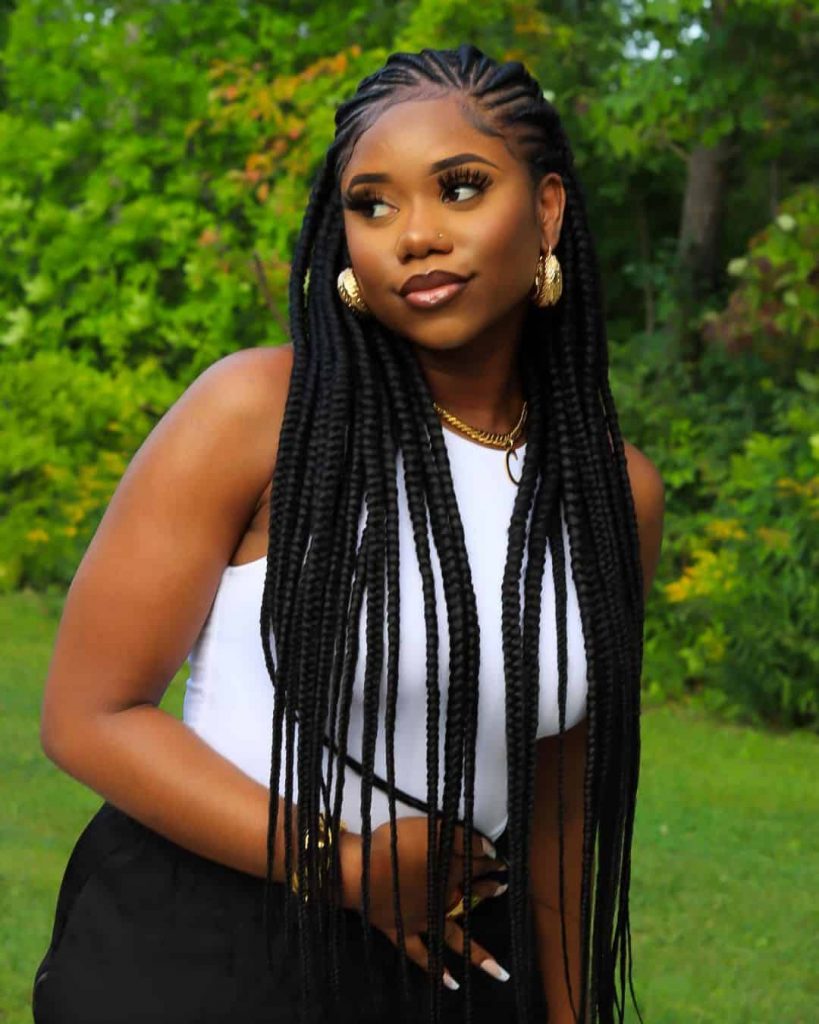
Otherwise, here is what you would need to do Fulani braids on your own:
- Packs of braiding hair. Depending on the length of Fulani braids you need, choose a length that is suitable for you. Think long X-pression braiding hair or normal-length braids.
- Black rubber bands or hair bands to hold the hair in sections as you braid.
- Shine n Jam Conditioning Gel to hold down the hairs so you can achieve clean parts.
- Hair mousse, a styling foam, that gives some hold and definition to hair strands, whilst protecting and taming your hair.
- Edge control to help define your edges so your hair look is more flaterring.
- A rat tail comb that does a great job in parting hair before braiding.
Remember, you always want to start with clean, and stretched hair so the braiding process is faster and your braids last longer.
You May Also Like: Coi Leray Braids: Tutorials & Inspiring Braid Styles To Try
Ready to braid your own hair? Check out the following video tutorials:
Neat Fulani Braids
These are the typical Fulani braids as discussed above. However, add spice to your look by choosing different styles for cornrows so your look is more flattering.
Goddess Fulani Braids
Essentially, goddess braids are thicker cornrows that are bigger in size, raised higher, and are also braided closely to your scalp.
When going Fulani-style, go for thicker cornrows as you normally won’t do. You can also opt for stitch lines to achieve a stylish goddess braided look. Achieve a cleaner look, also, by starting your cornrows the knotless way.
Fulani Braids with Curls
Feel free to try different styles of cornrows for a spiced-up look as well as add a more feminine vibe by going for curls at the back of your head.
These curls can be made from crotched hair.
Hair Tips For Fulani Braids…
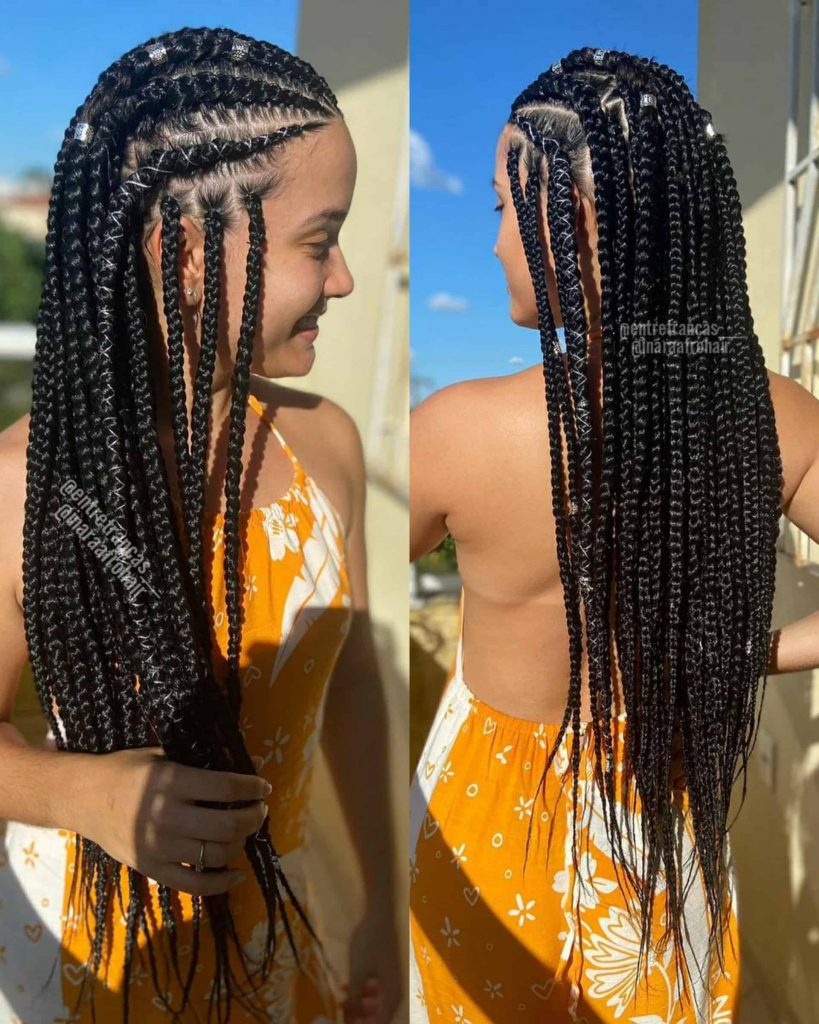
When doing your parts, make sure you’re not parting pretty much above a braid you have finished below but in between the braids. This ensures the braids don’t fall directly above each other so you can fill in your braids well.
Part your hair in clean lines using a rat tail comb and remember to make them clean and neat by applying the Shine N Jam Conditioning Extra Hold With Honey on the scalp. This gel helps to hold the hairs together, and can also be used as edge control.
Also, go for medium-sized braids at the back to help feed in the box lines at the front. Many hairstylists prefer a knotless beginning for the scalp braid lines so the look is clean. Others also use the client’s natural hair to start the braid.
You May Also Like: How Do You Use Scalp Massager For Hair Growth?
Flattering Fulani Braids to Try
Fulani braids can be worn as short or as long as you desire. This protective style also helps showcase your favorite facial features.
Try these flattering braiding styles during your next salon visit:
Fulani Braids with Curls
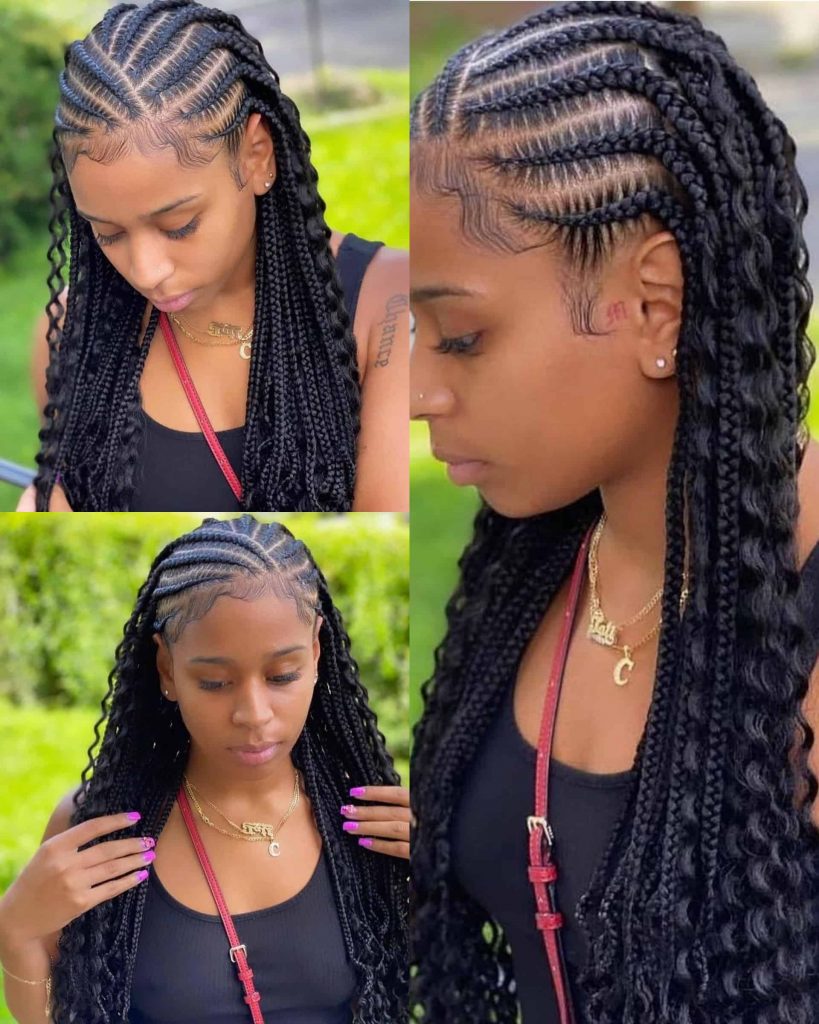
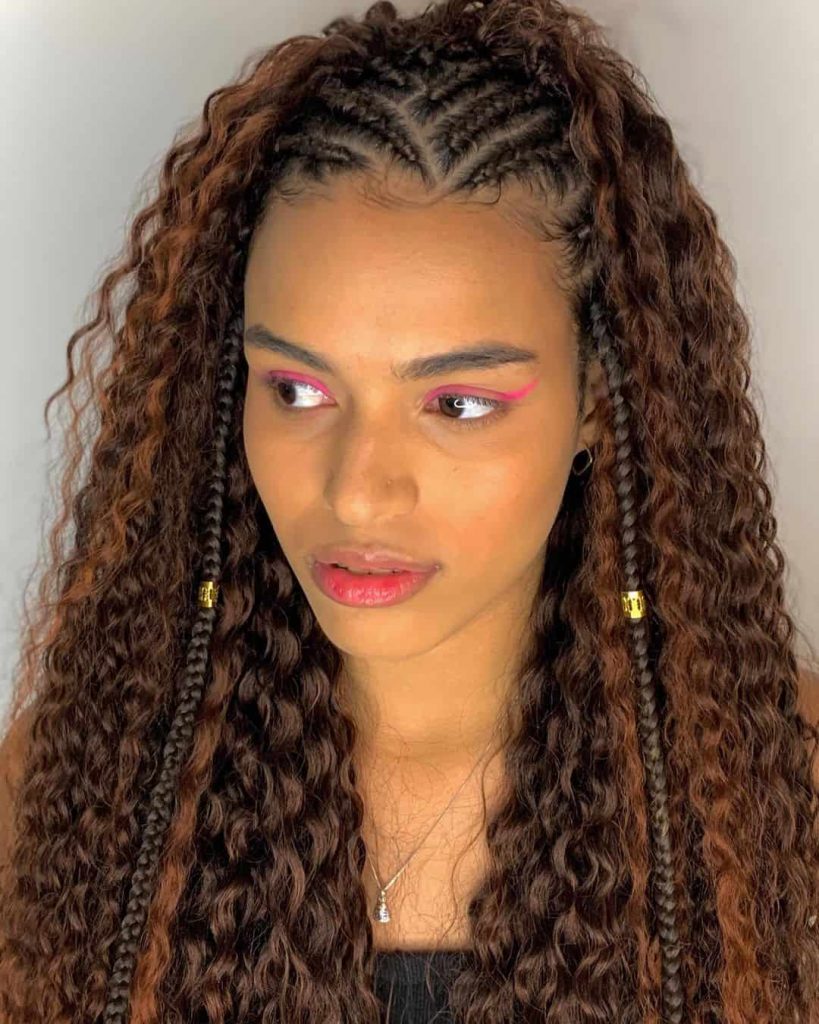
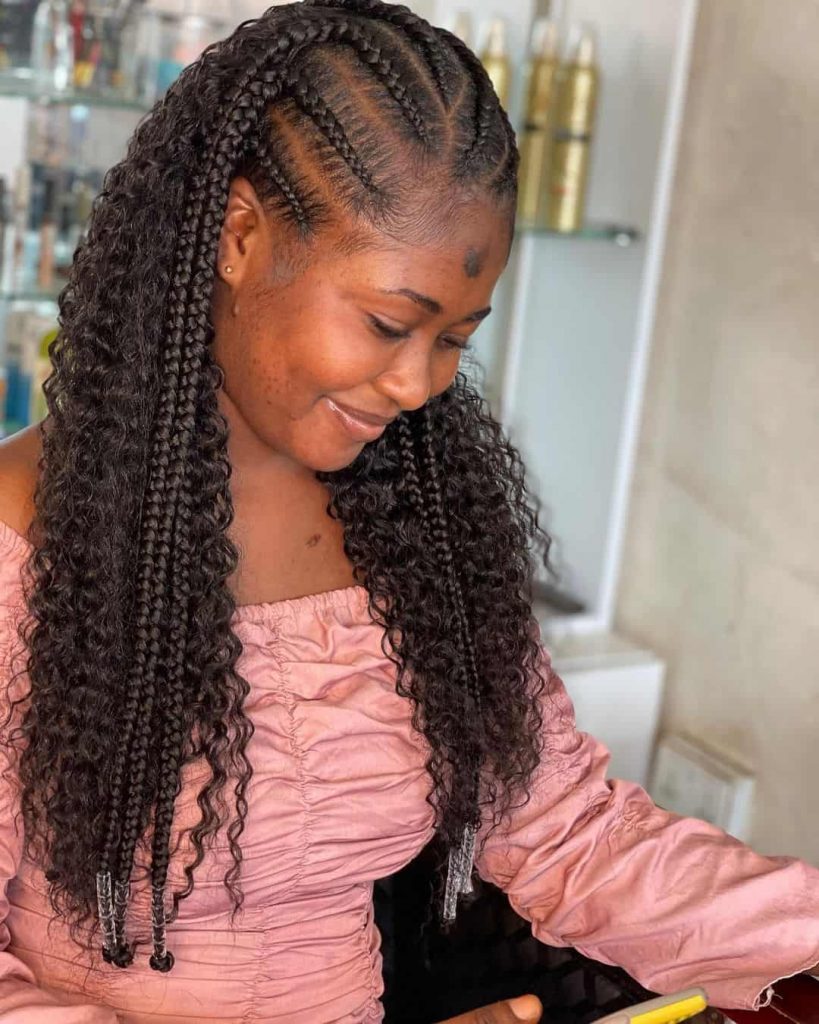

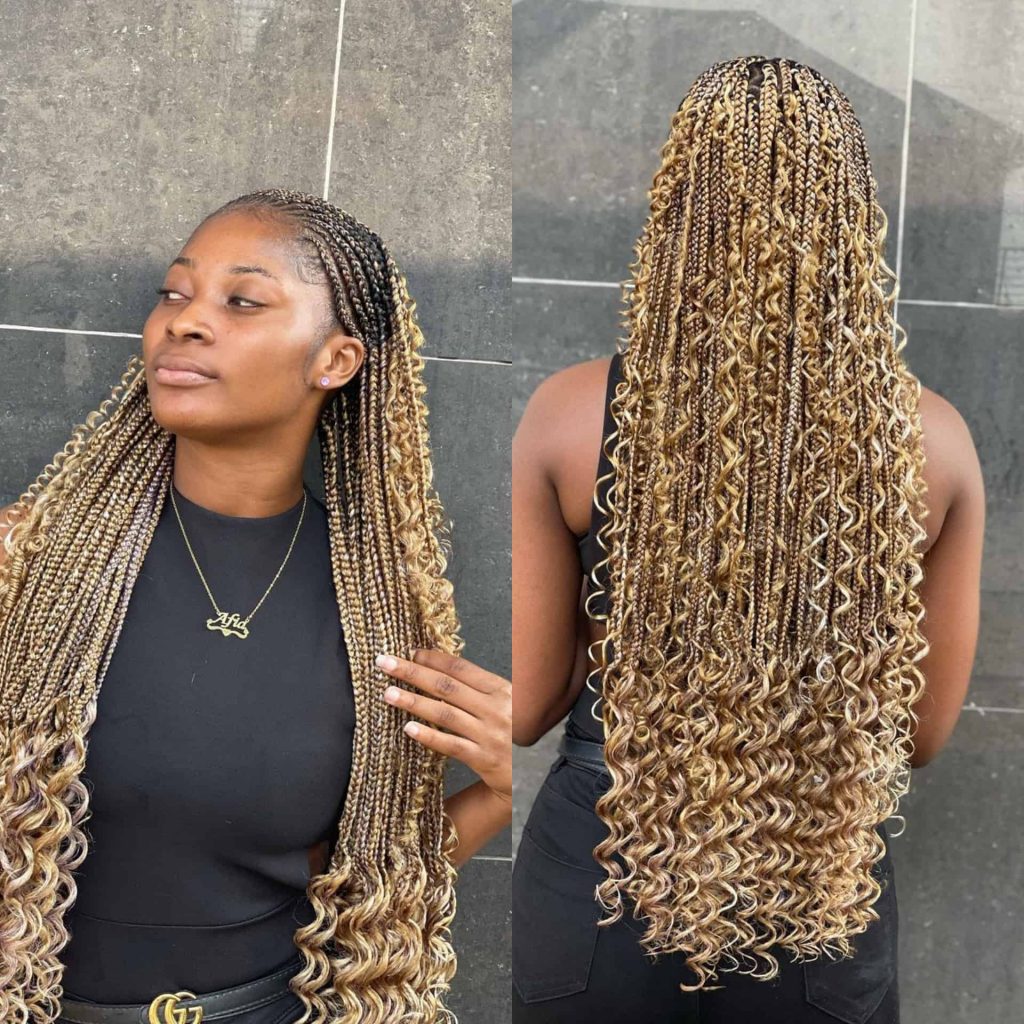
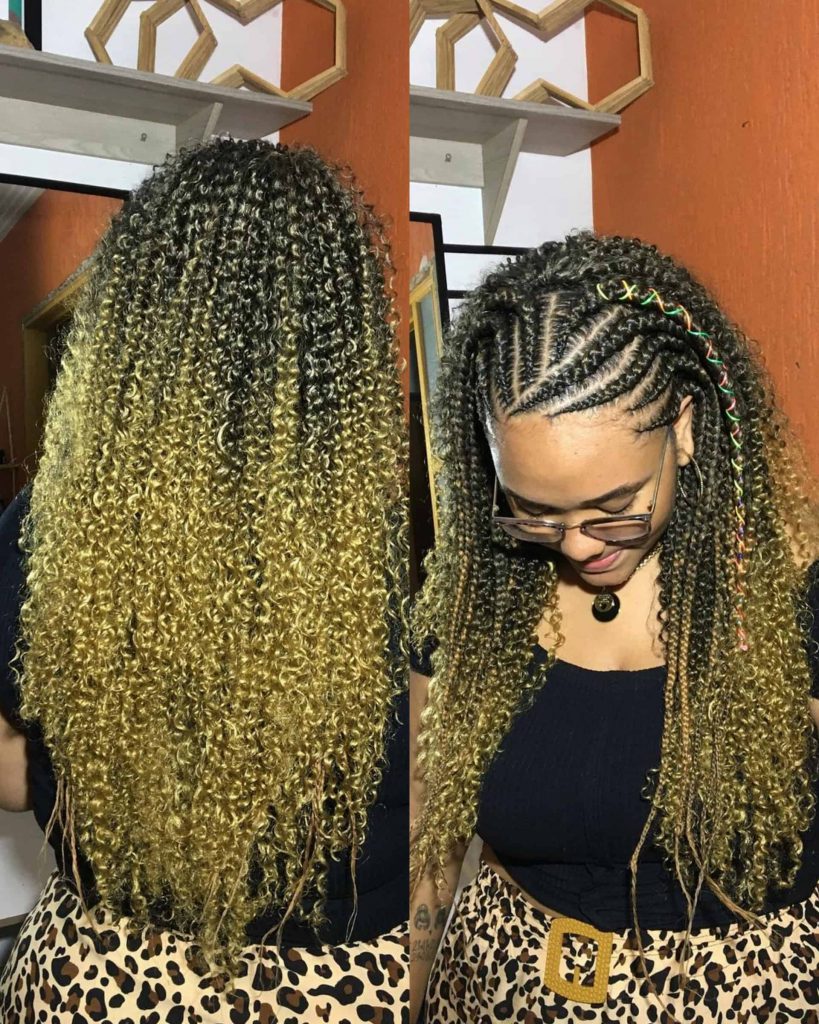

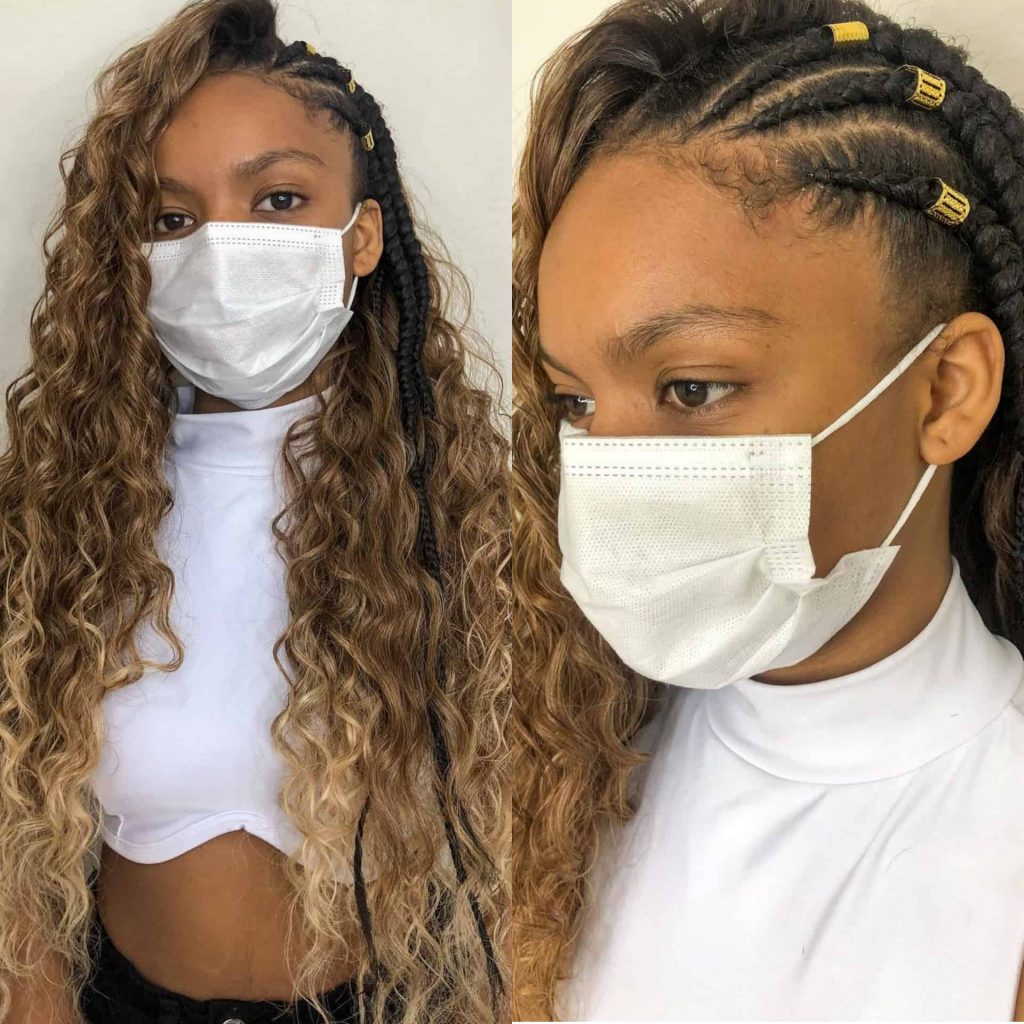


Fulani Braids with Beads
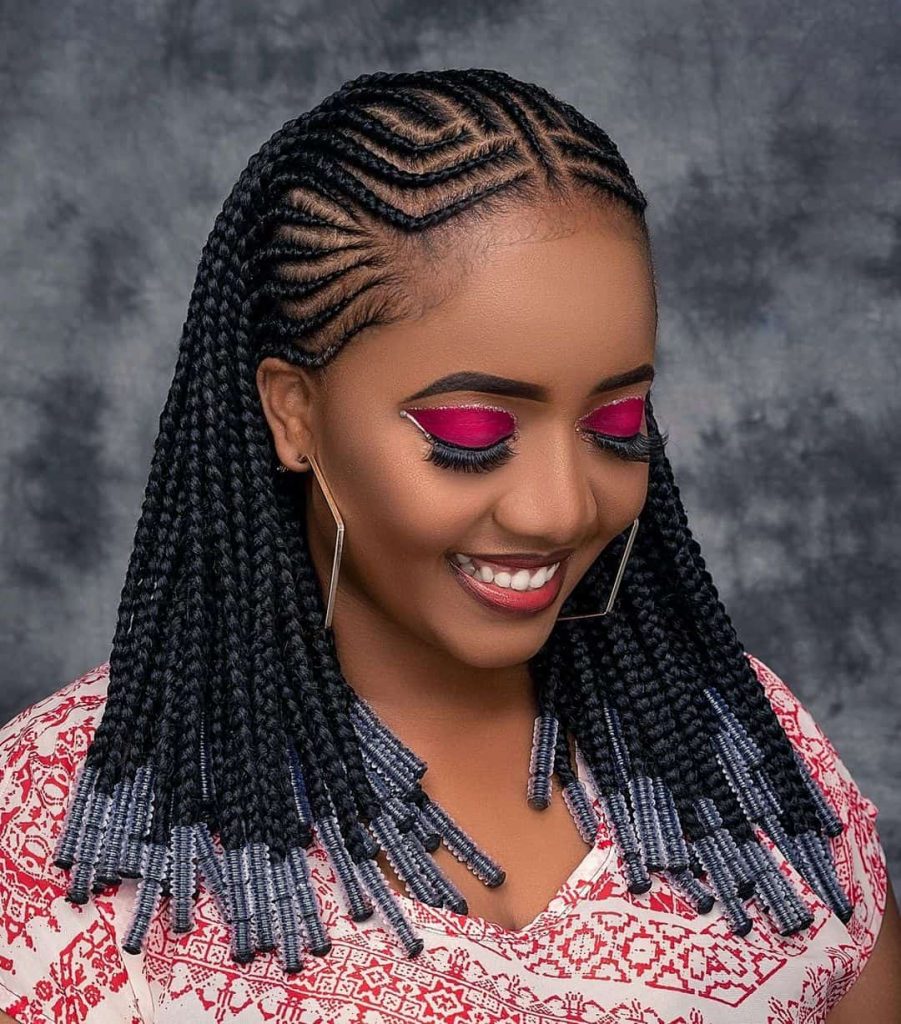
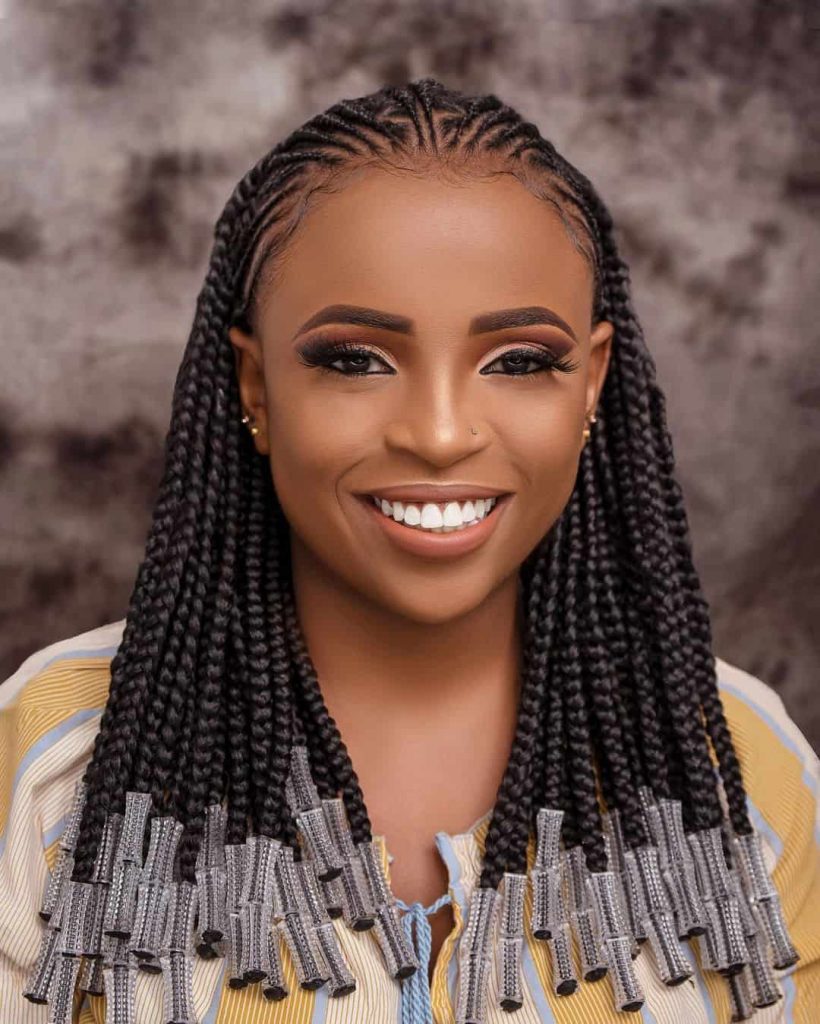
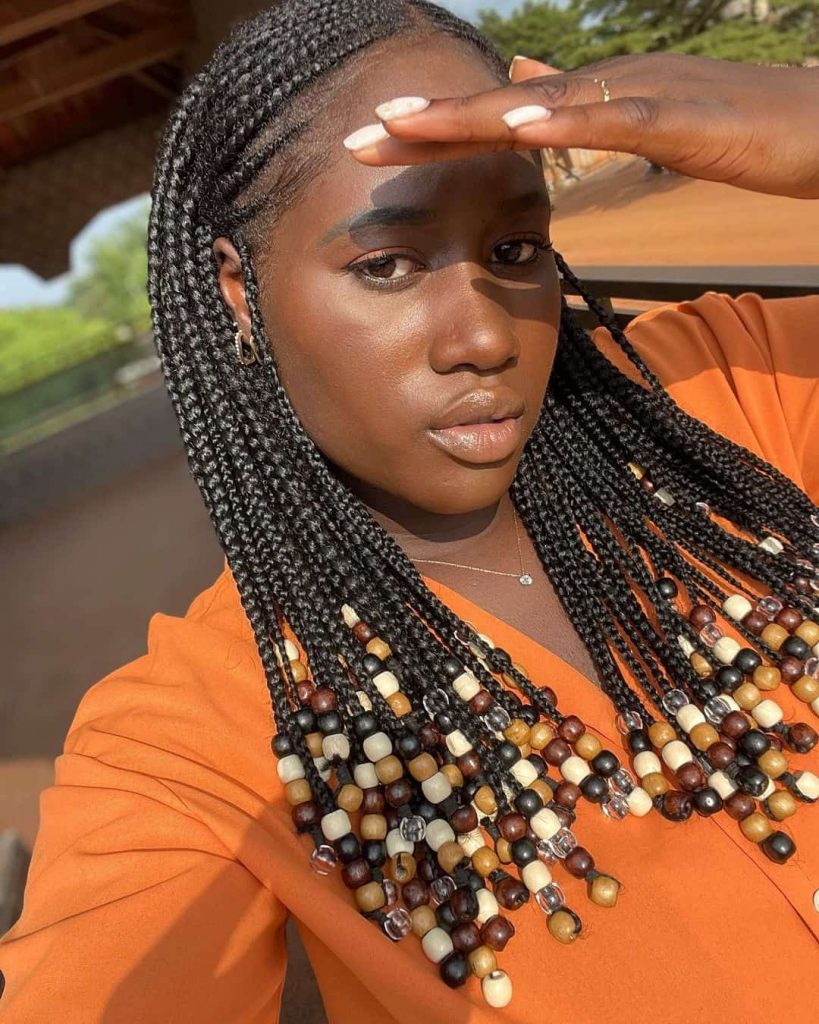
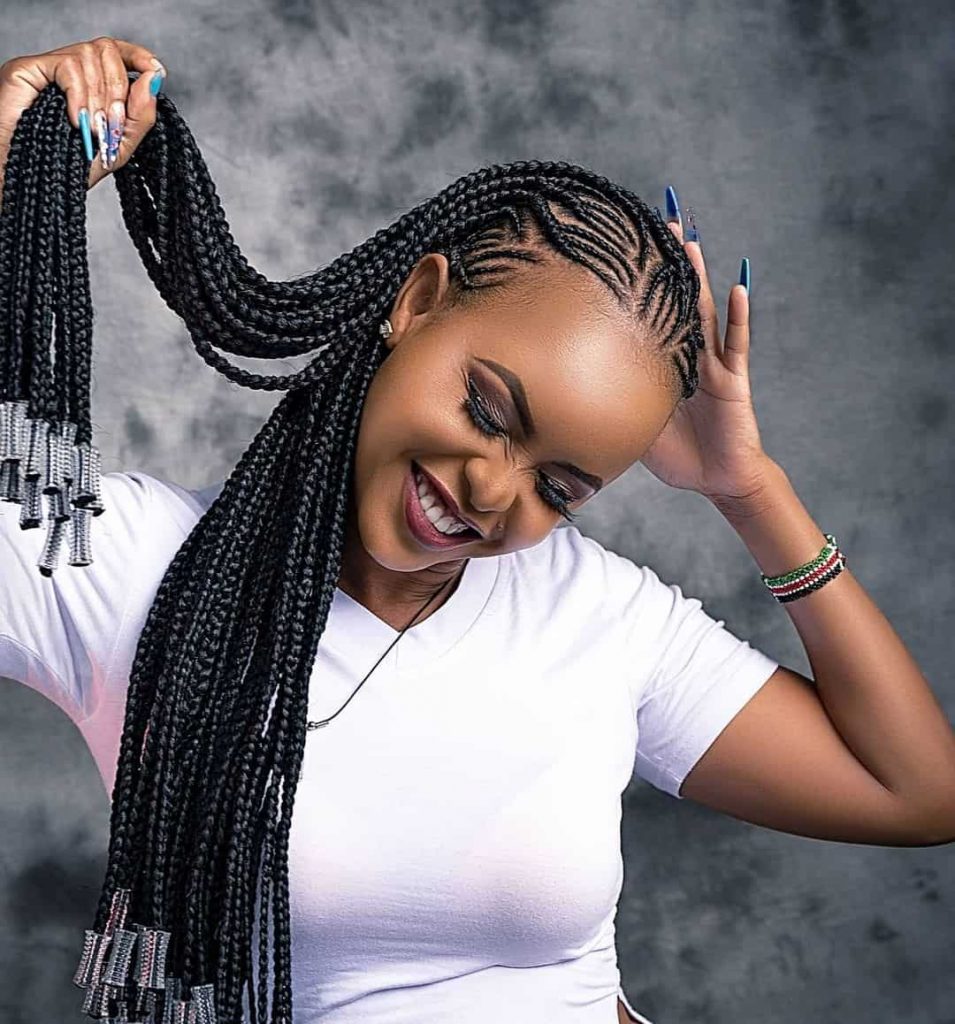
Half Feed-in Half Goddess Fulani Braids
To achieve this Fulani braiding style, feed synthetic hair into your natural hair beyond the start of your hairline gradually. As well, feature loose curls on the length of your box braids for a more flattering effect.

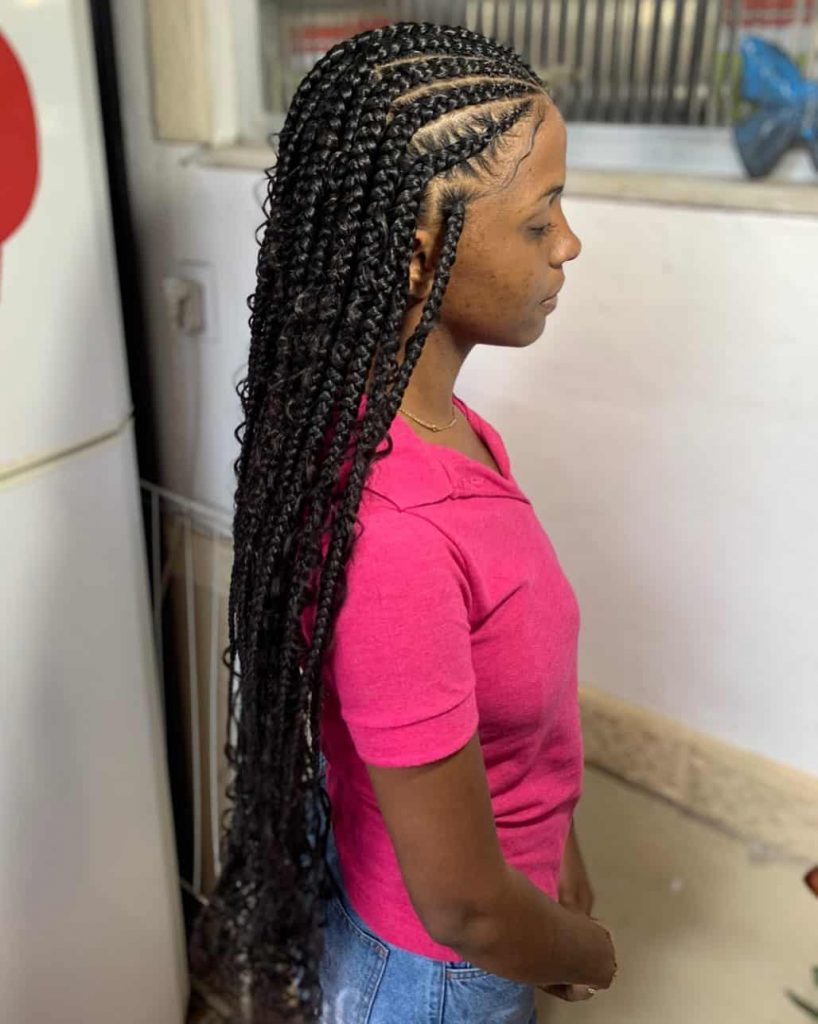
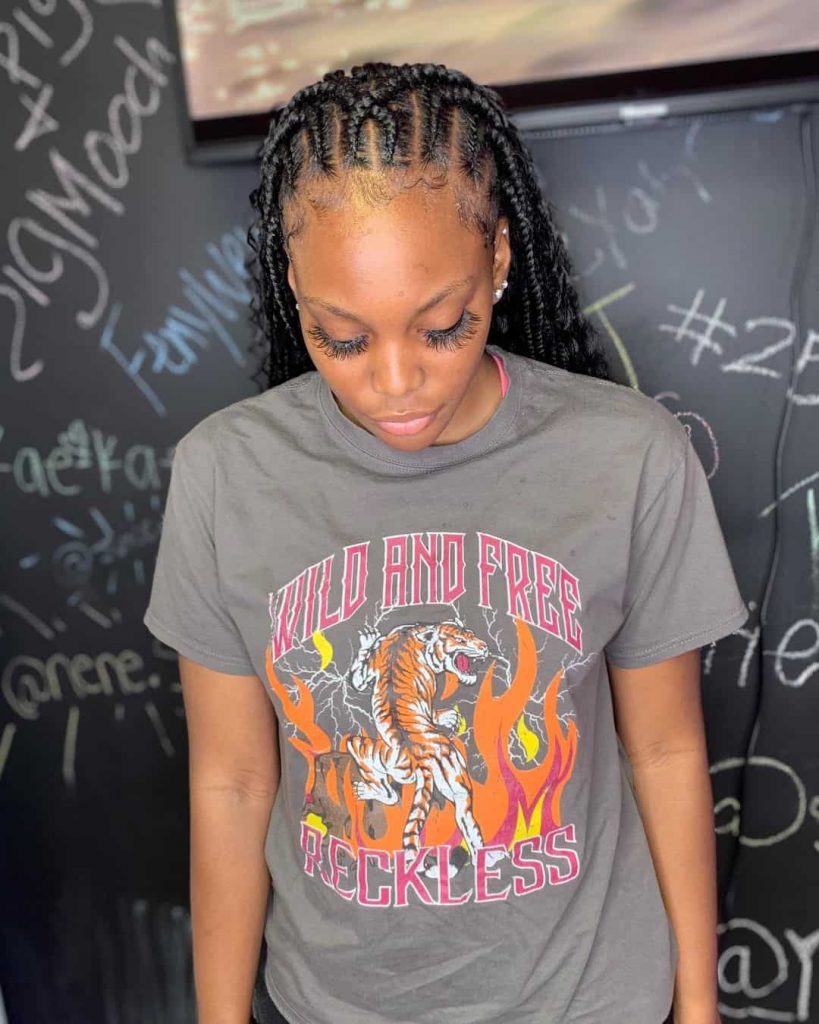
Bob Length Fulani Braids

Fulani Braids with Box Braids
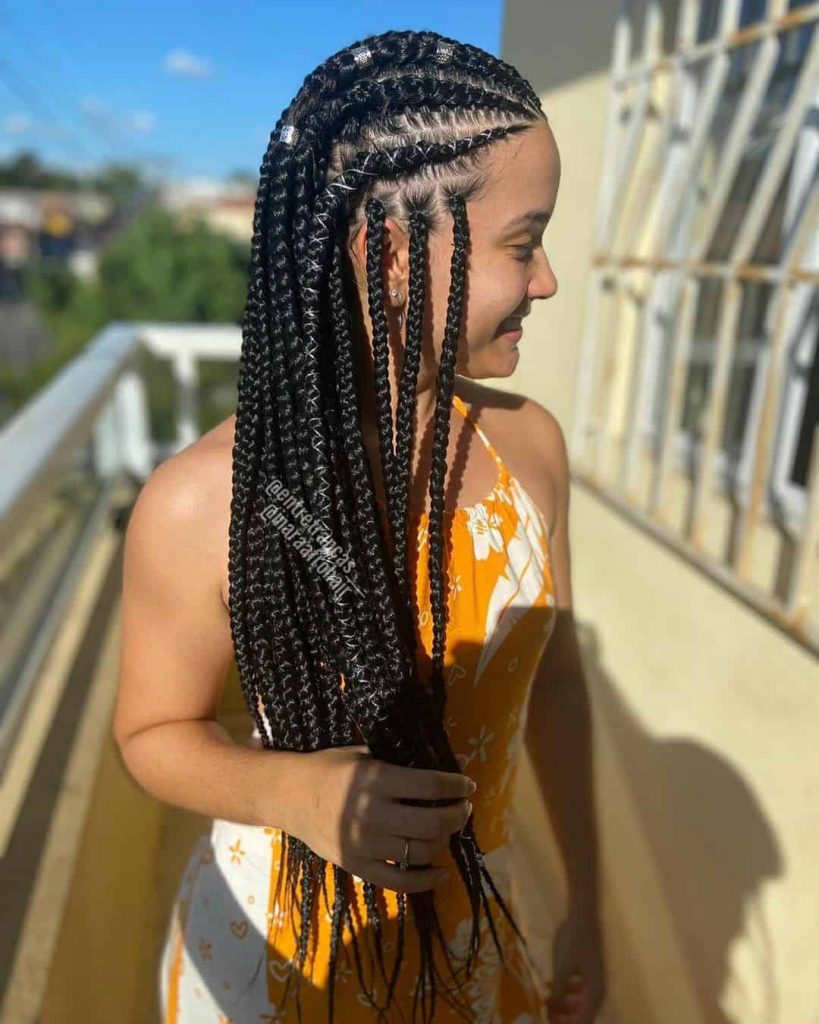
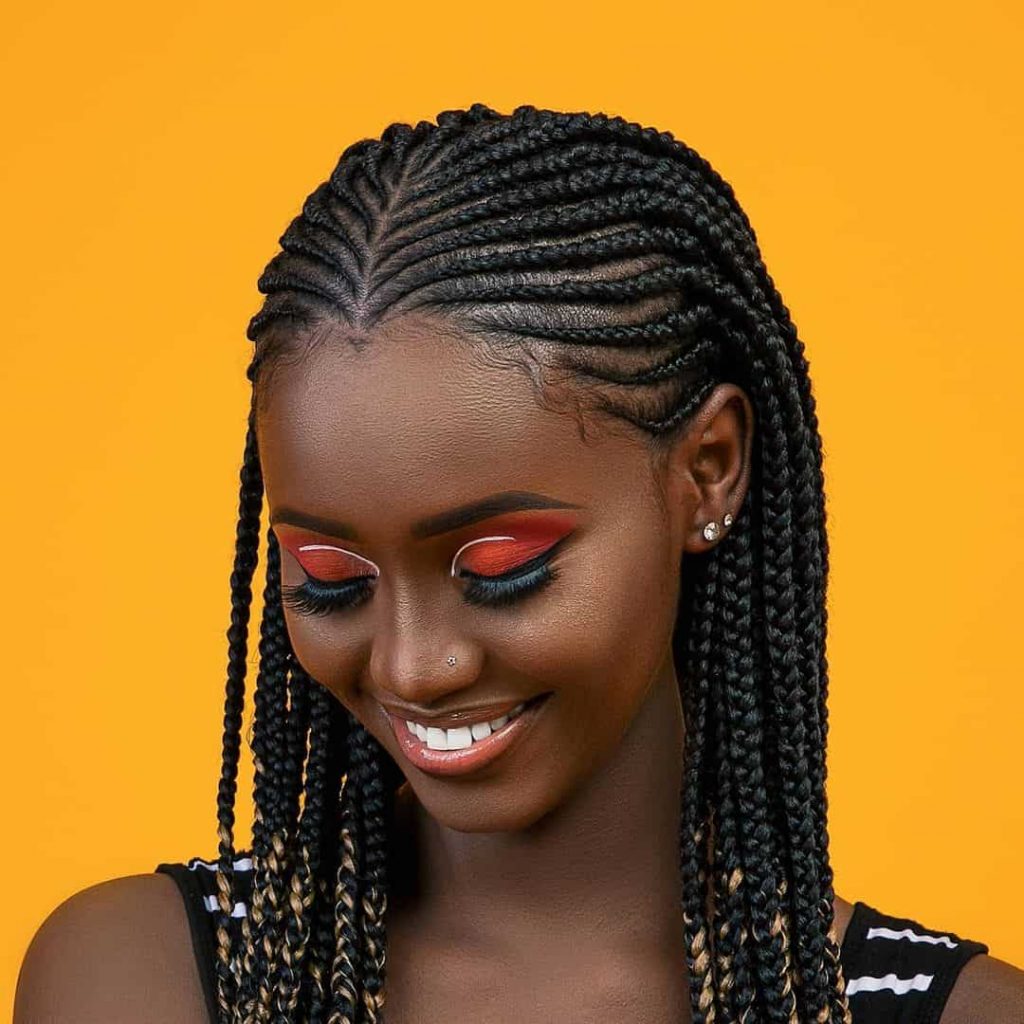

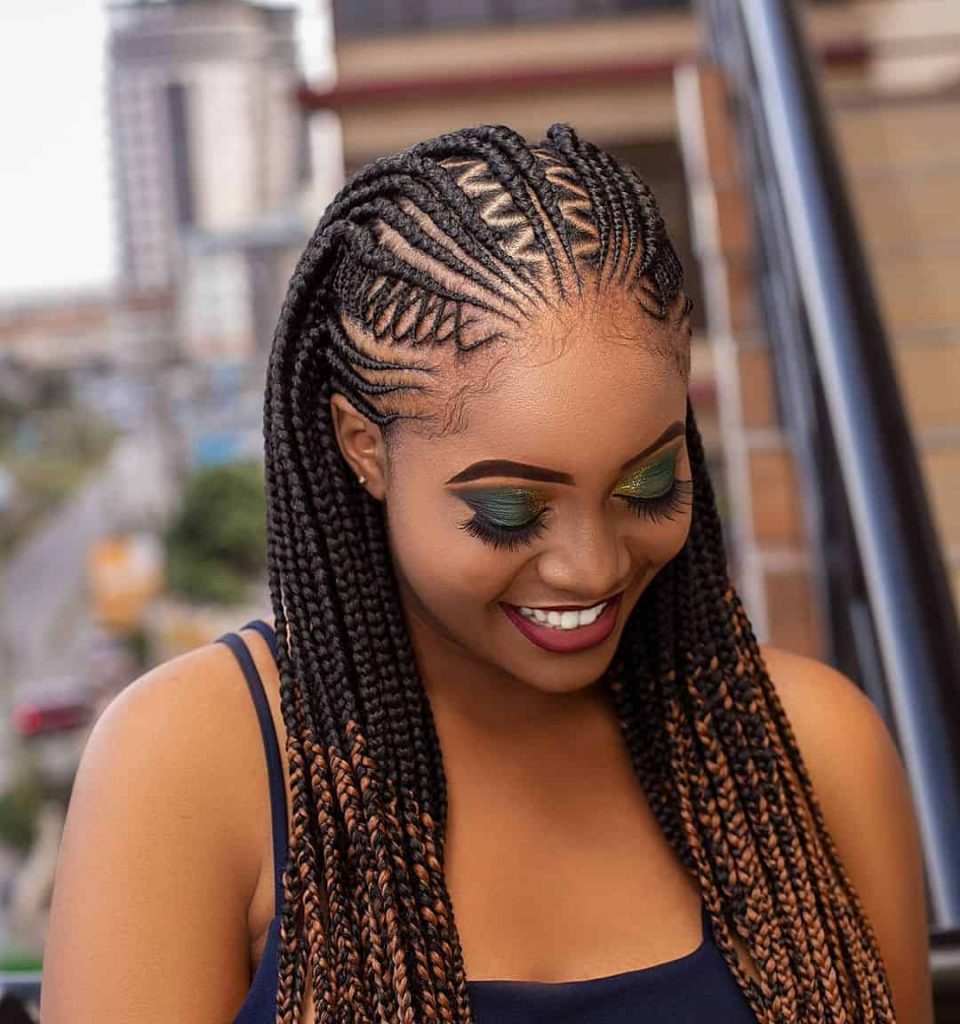
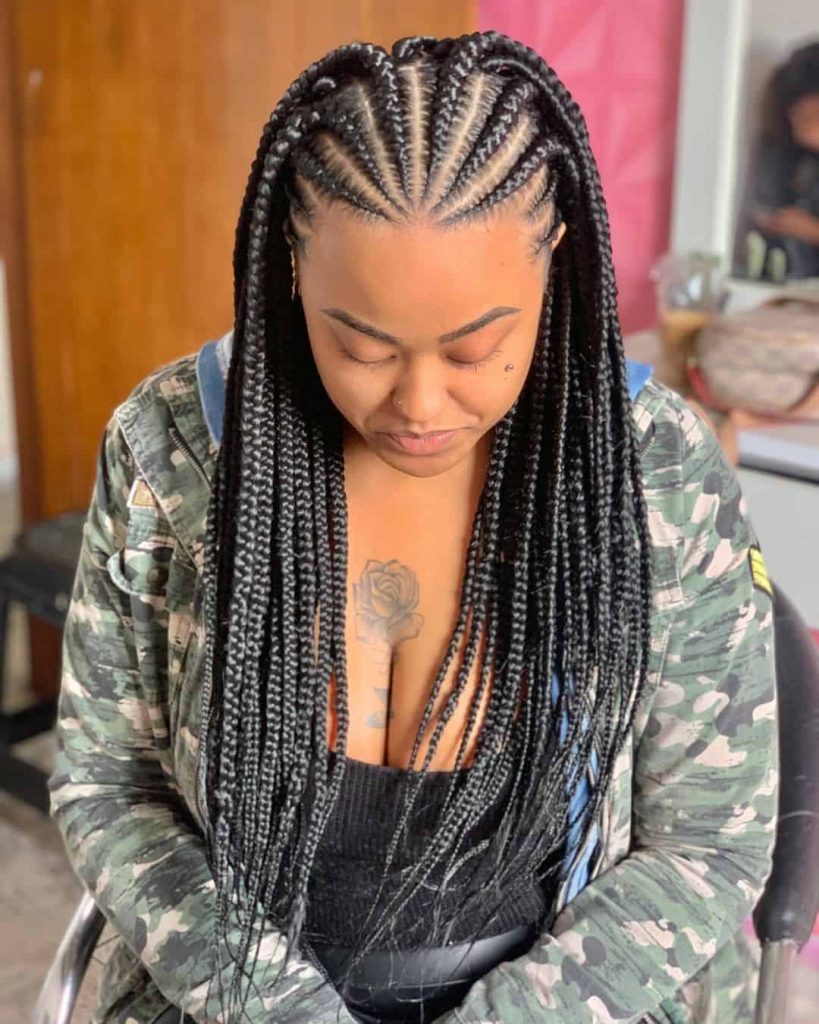
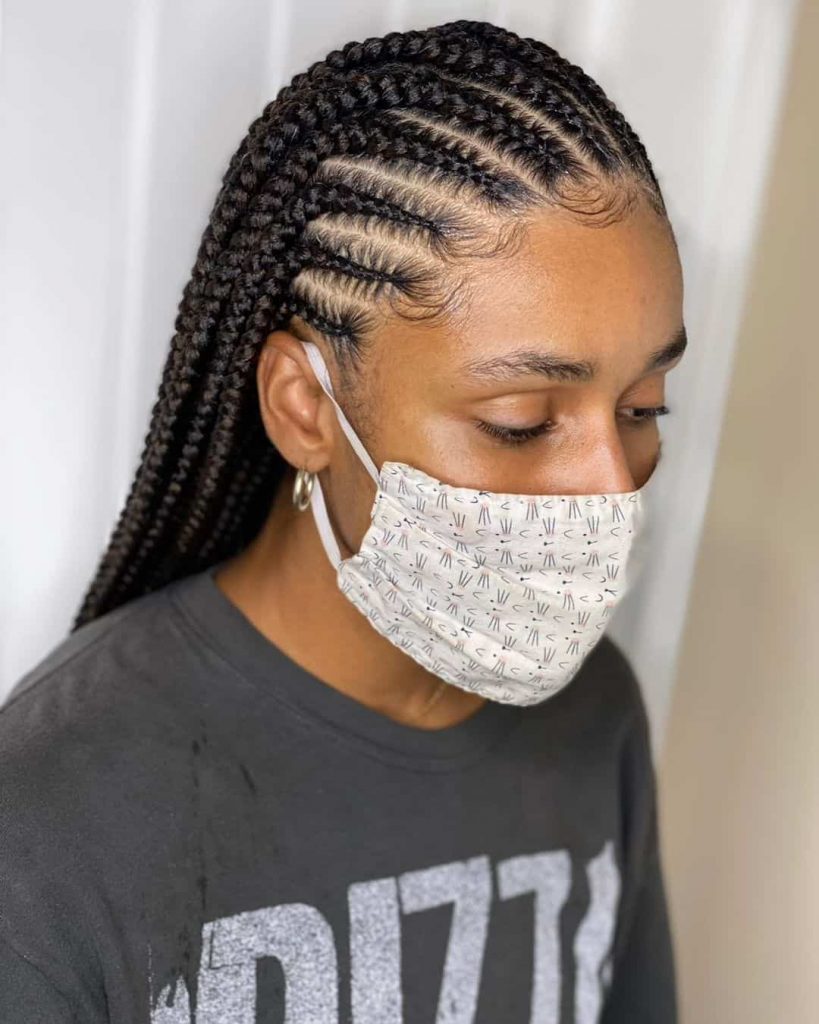

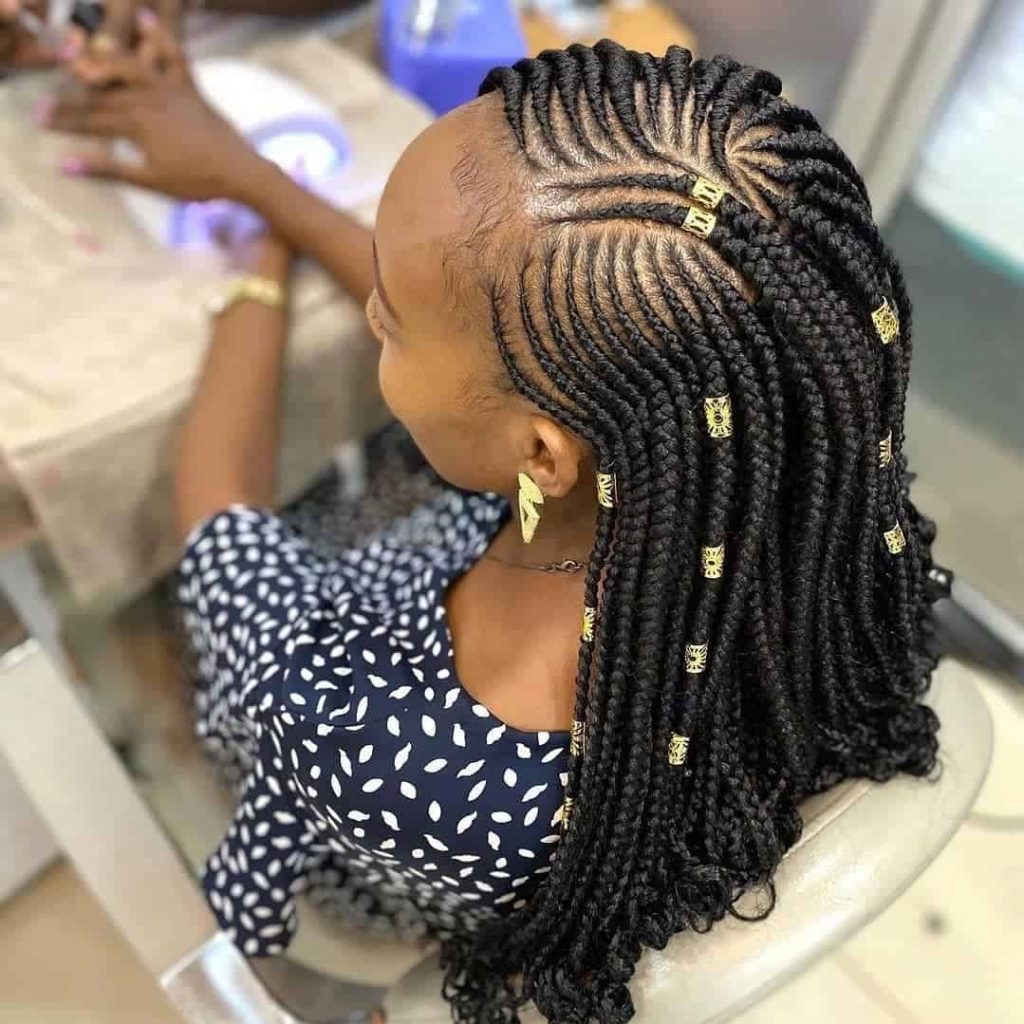
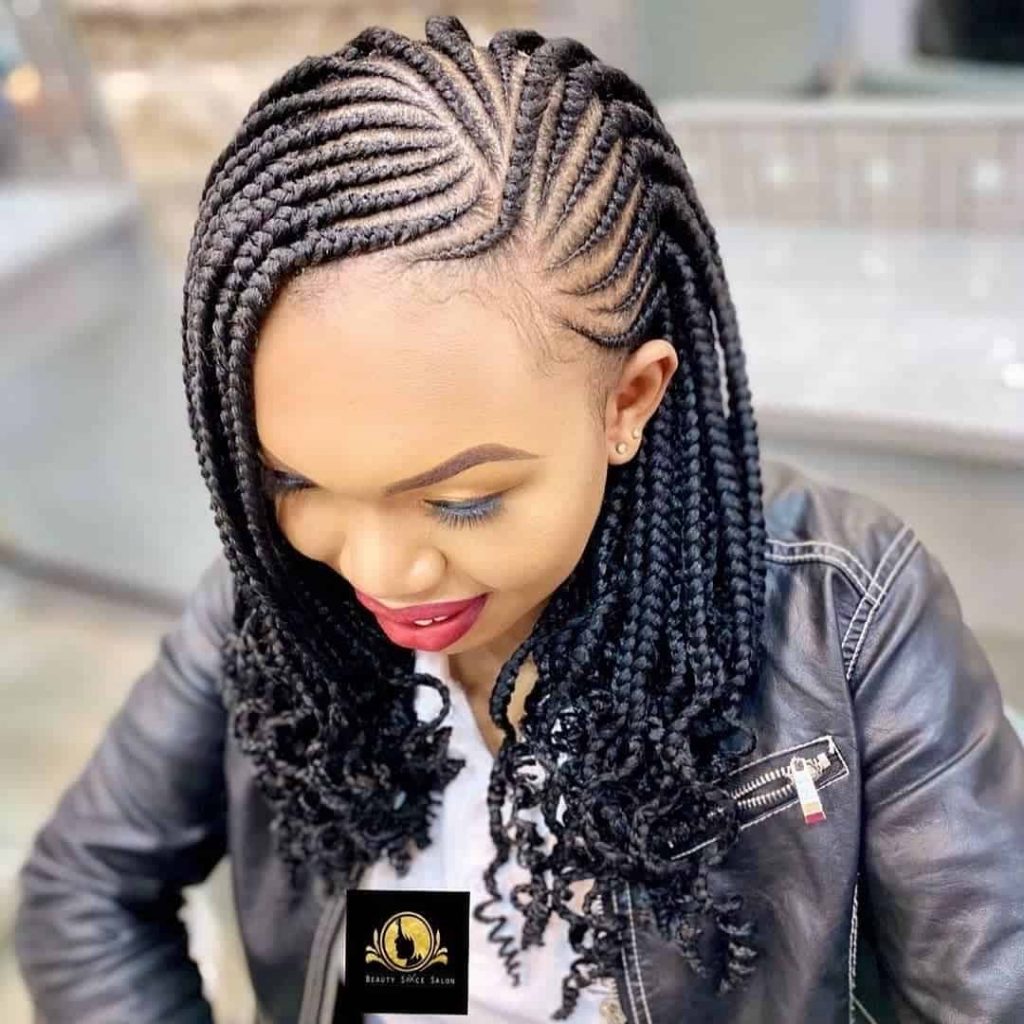
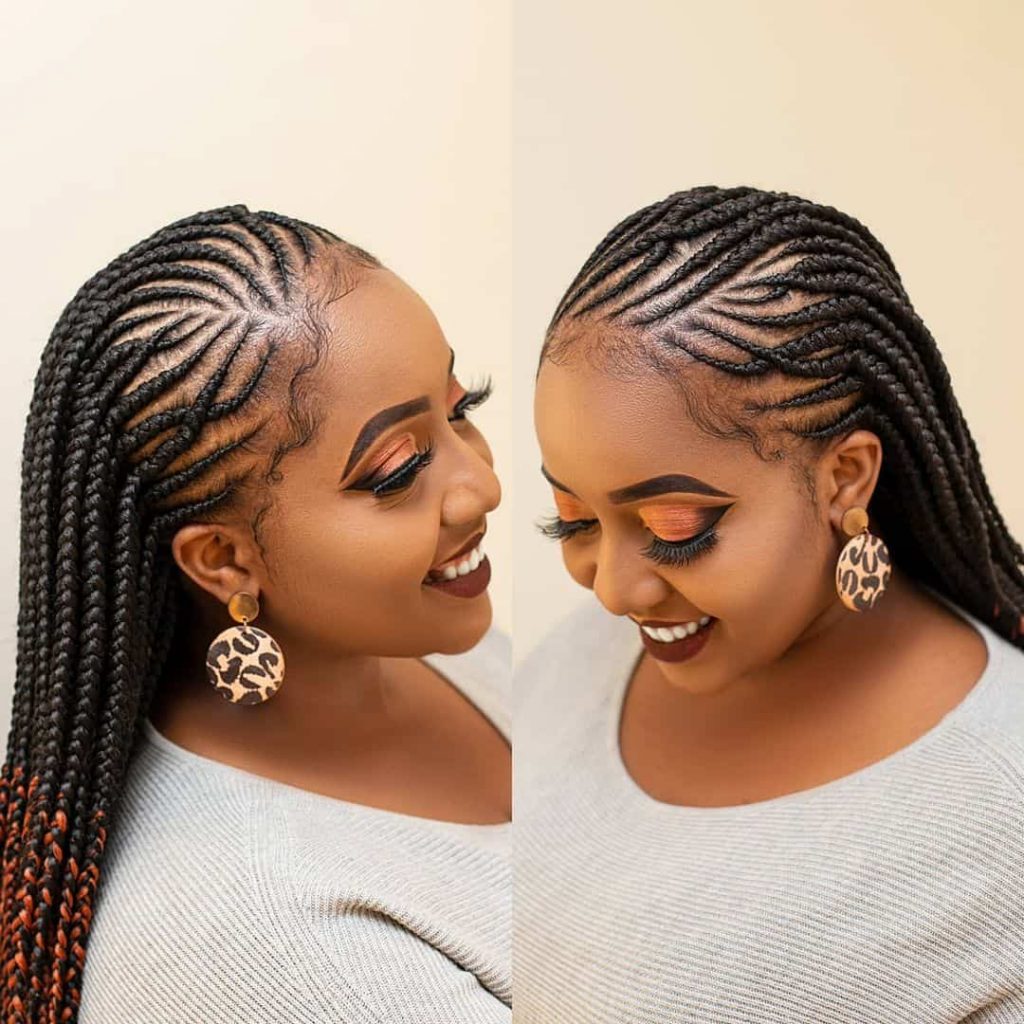
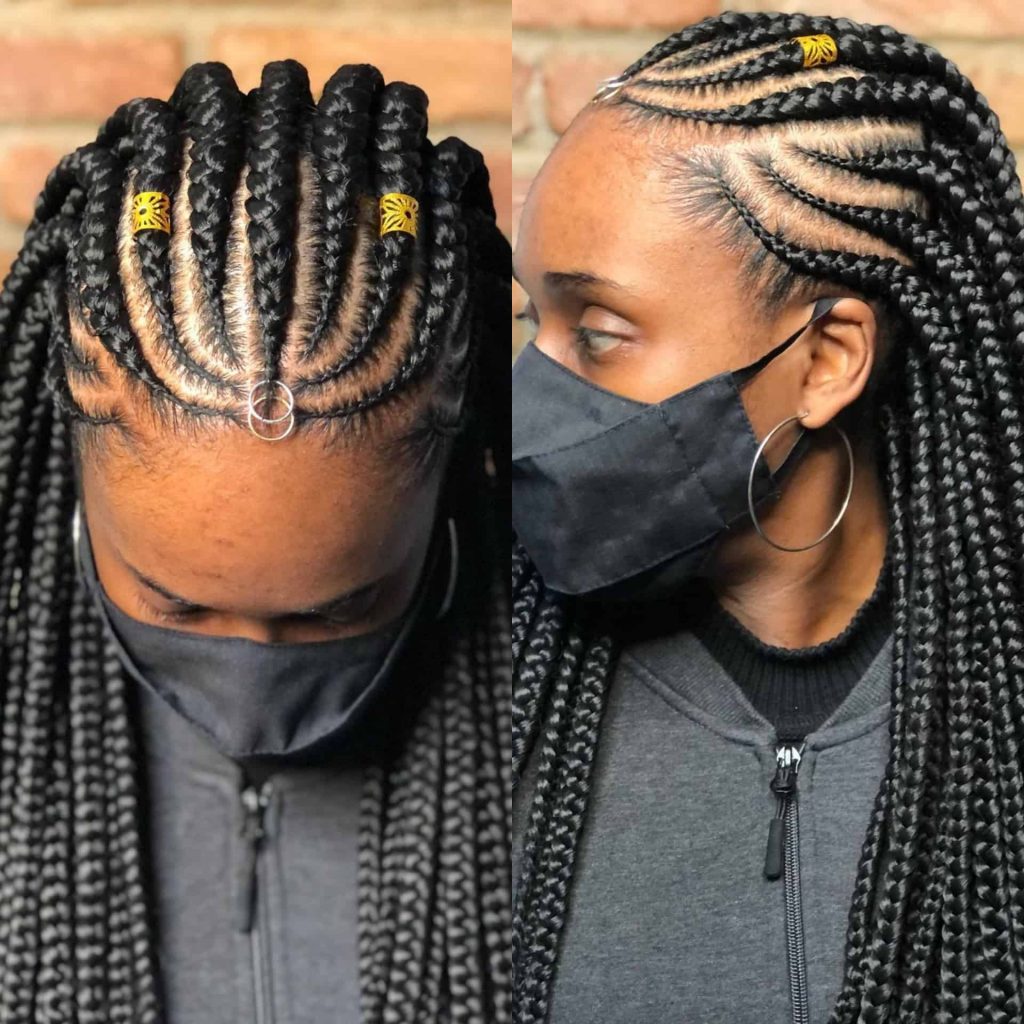
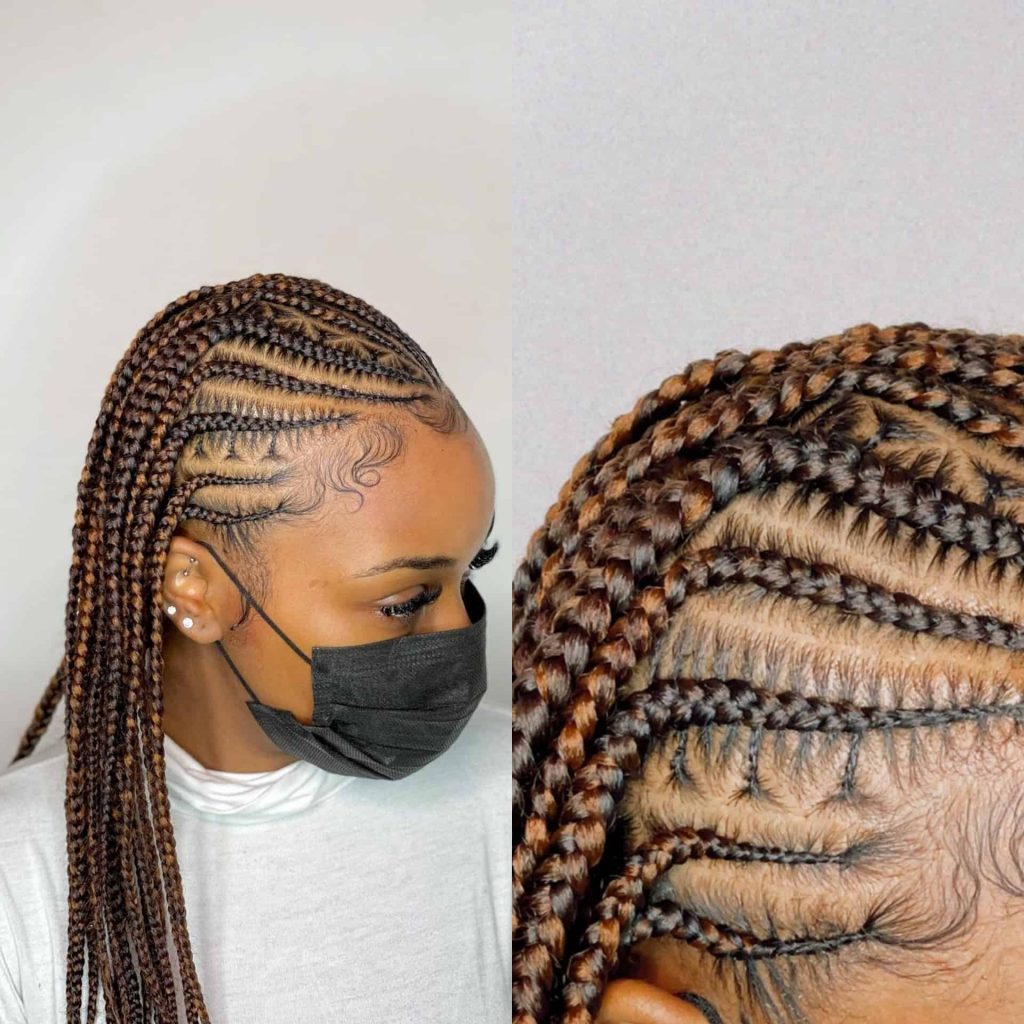
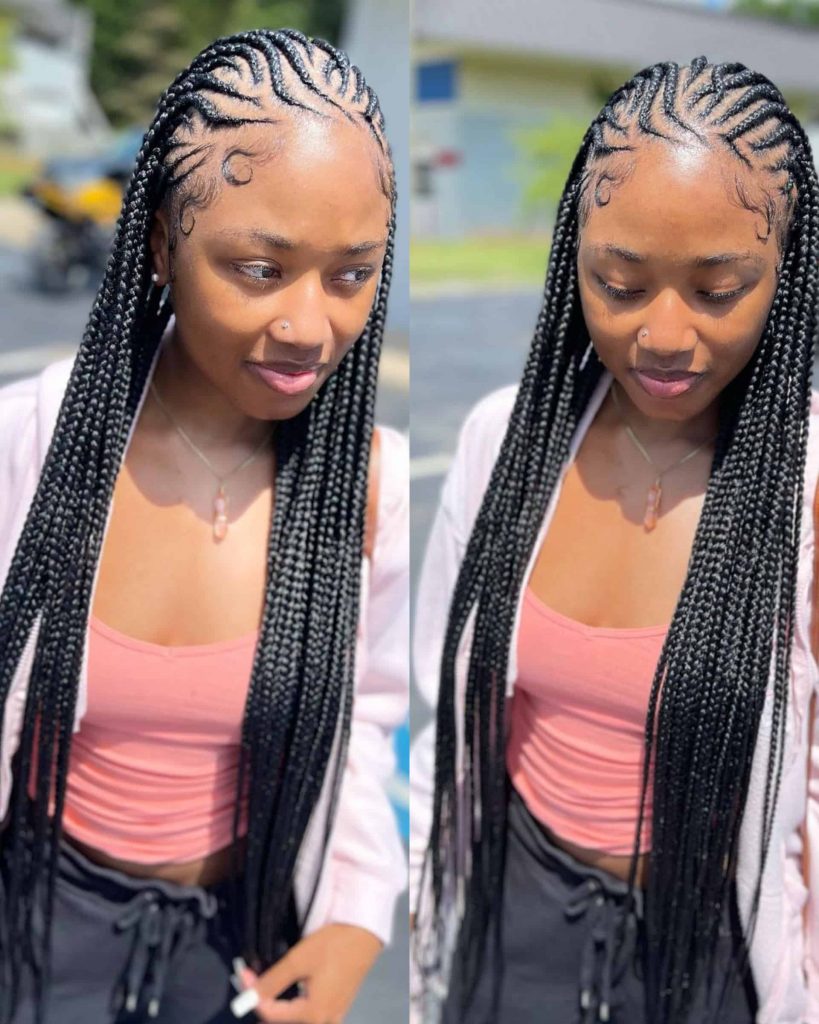
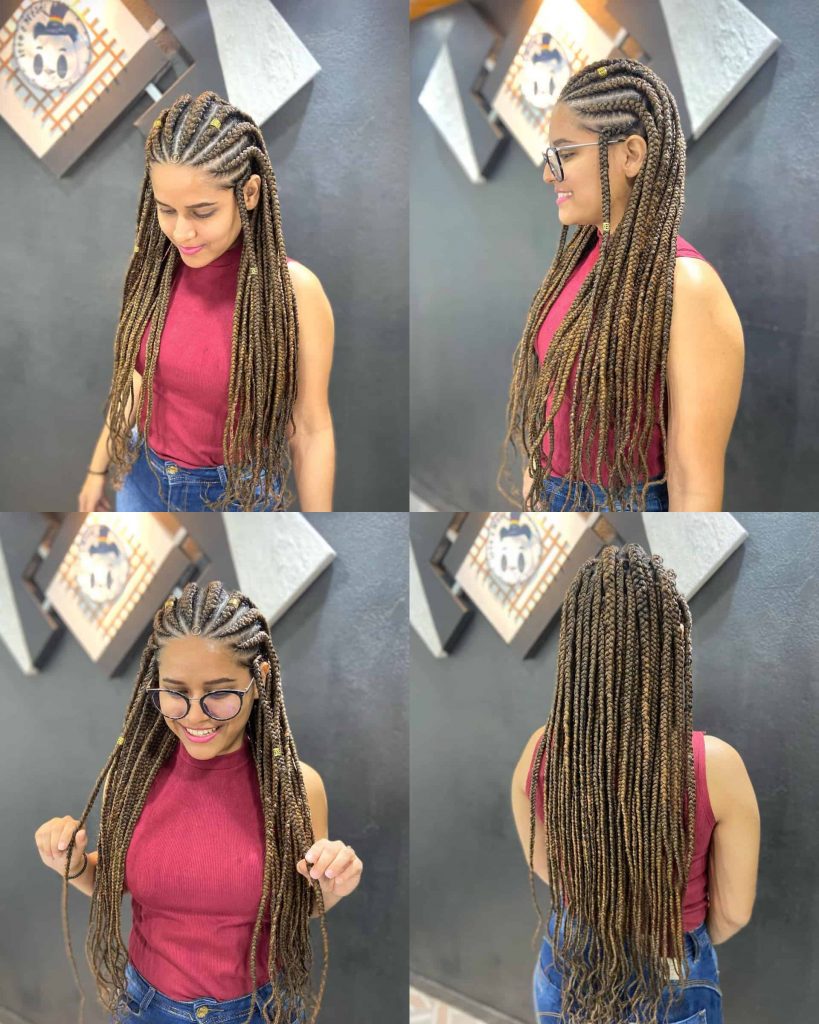
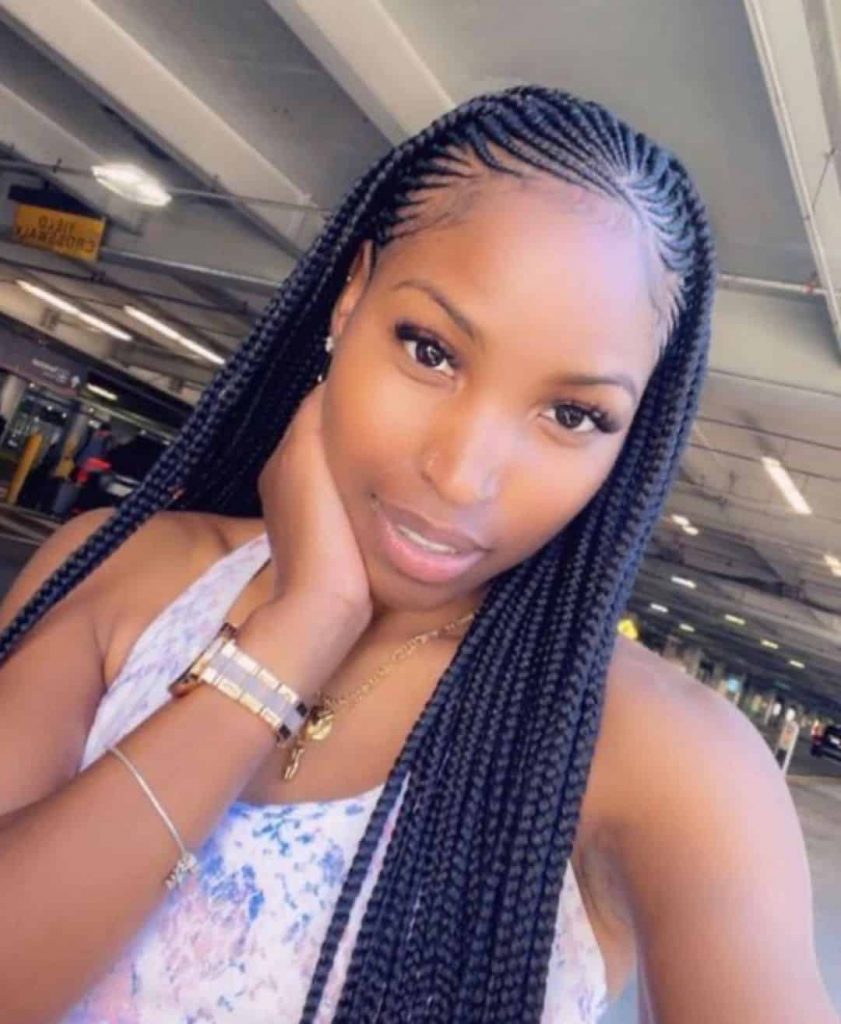
Fulani Braids with an Up-Do
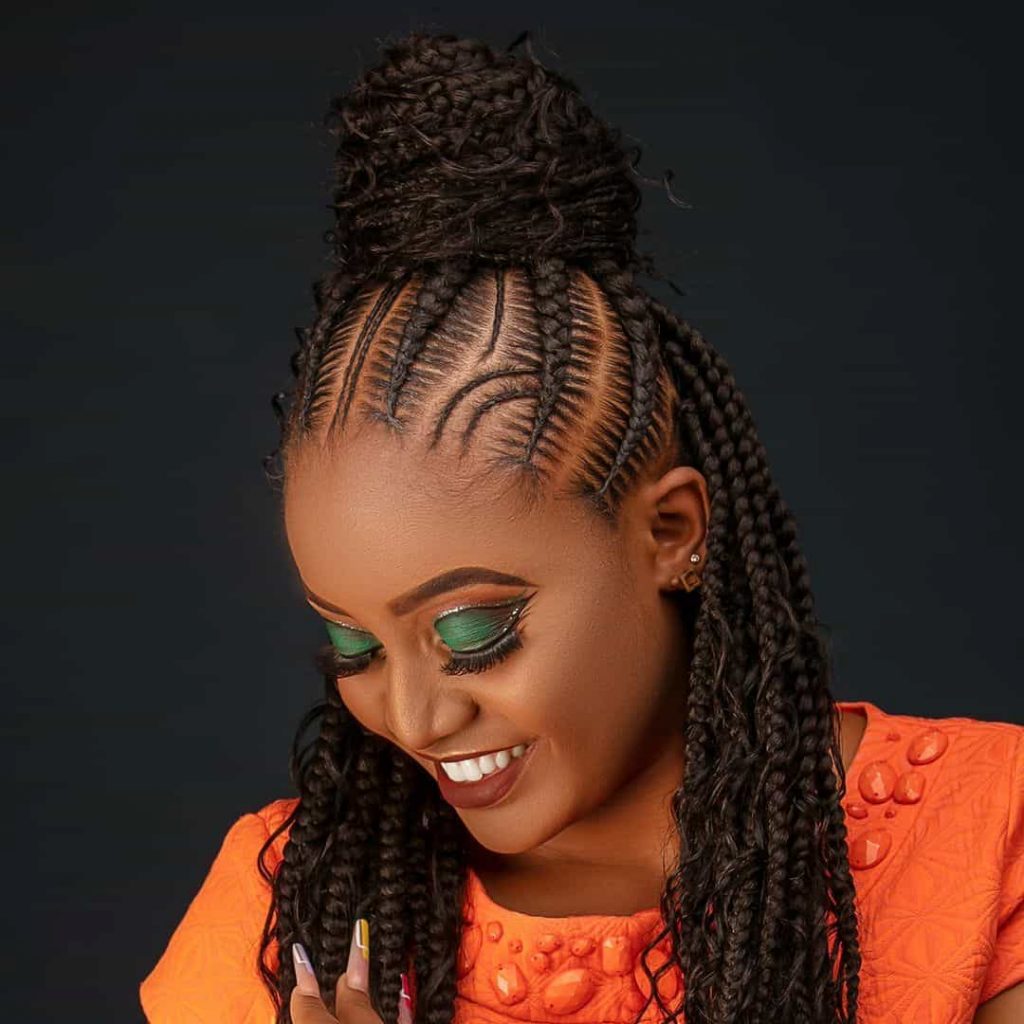
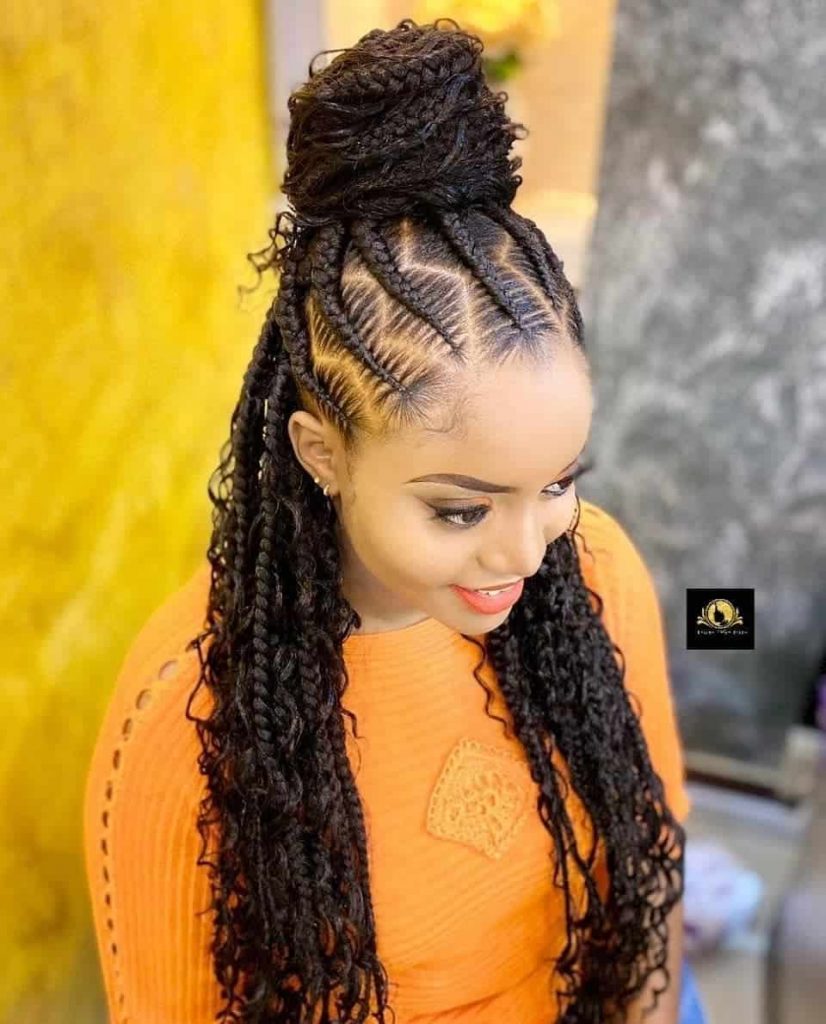

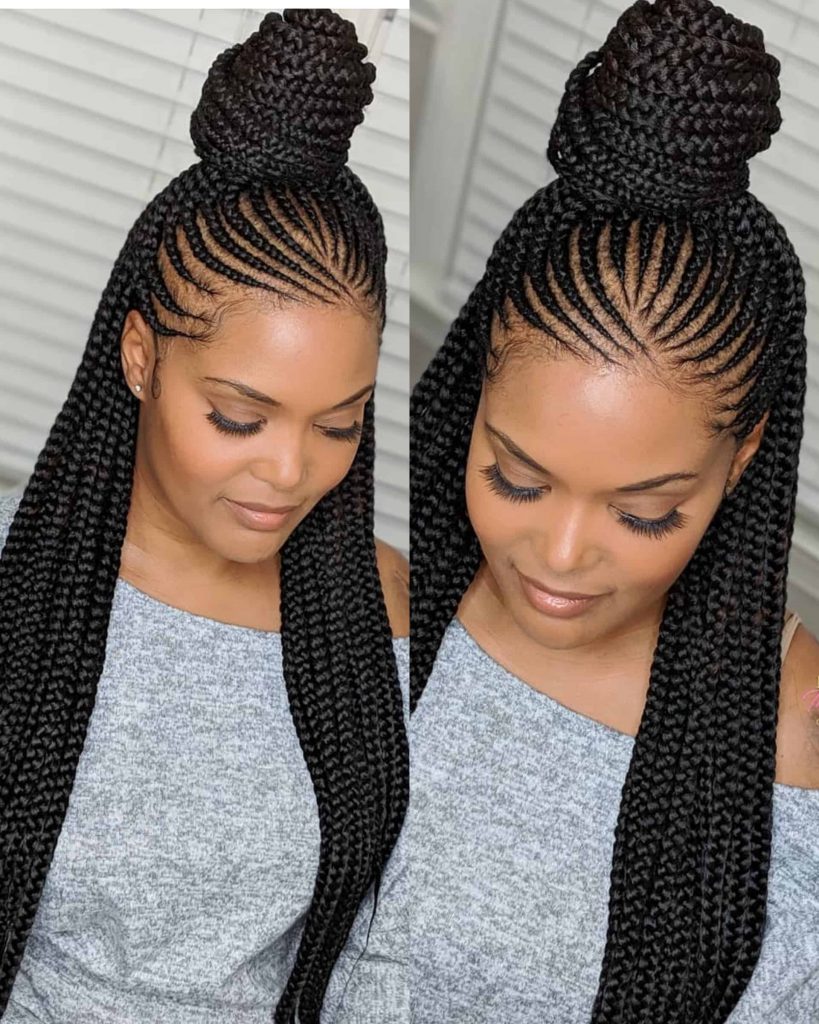
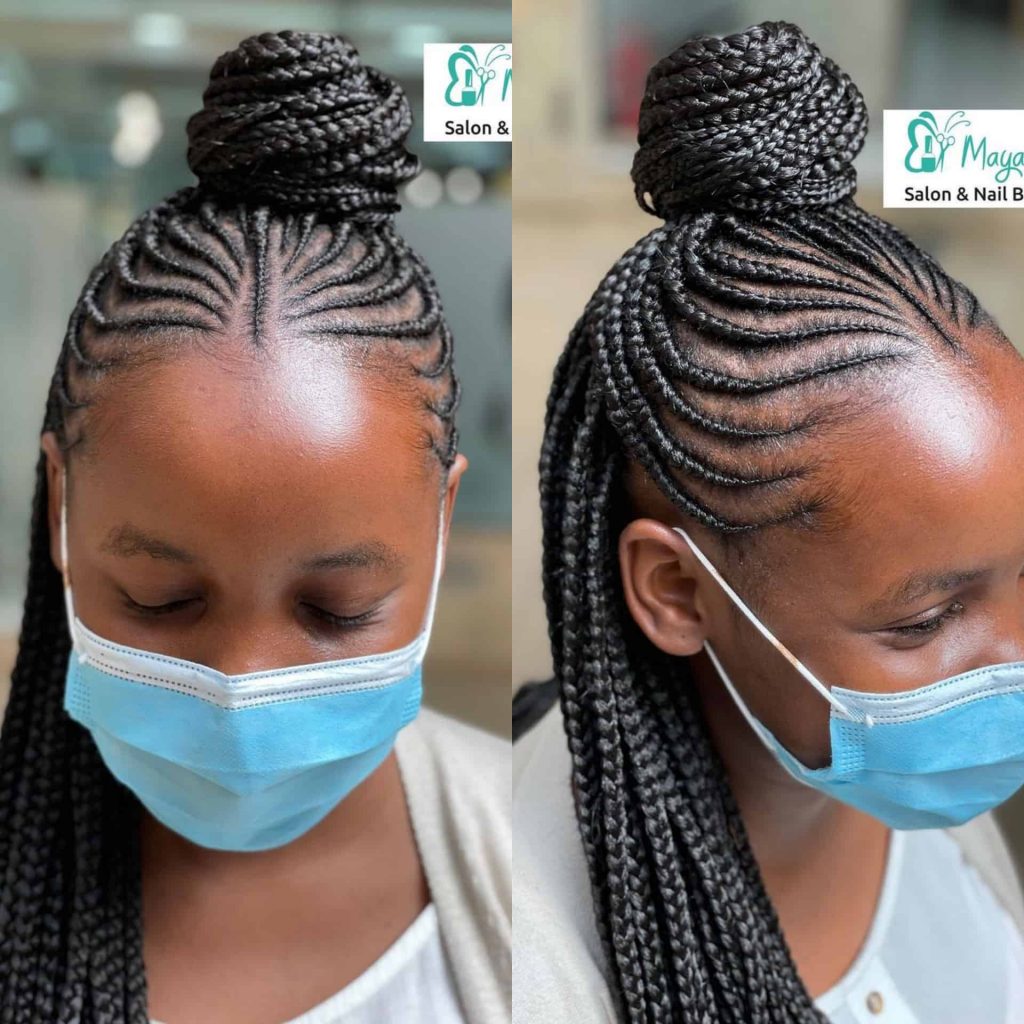
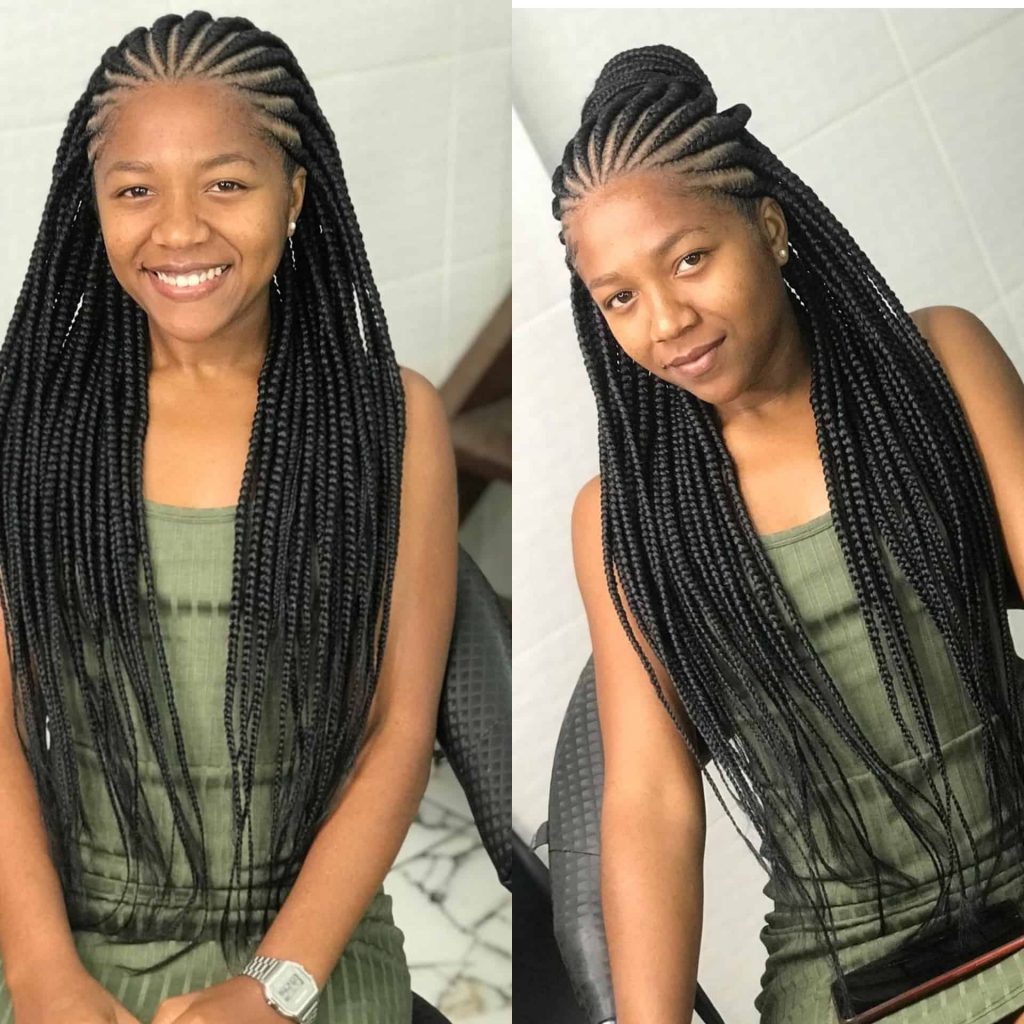
You May Also Like: Easy All-Day Hairstyles You Can Achieve Using Hair Extensions
Try these stylish Fulani braids and rock your protective style sis!

